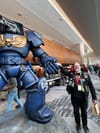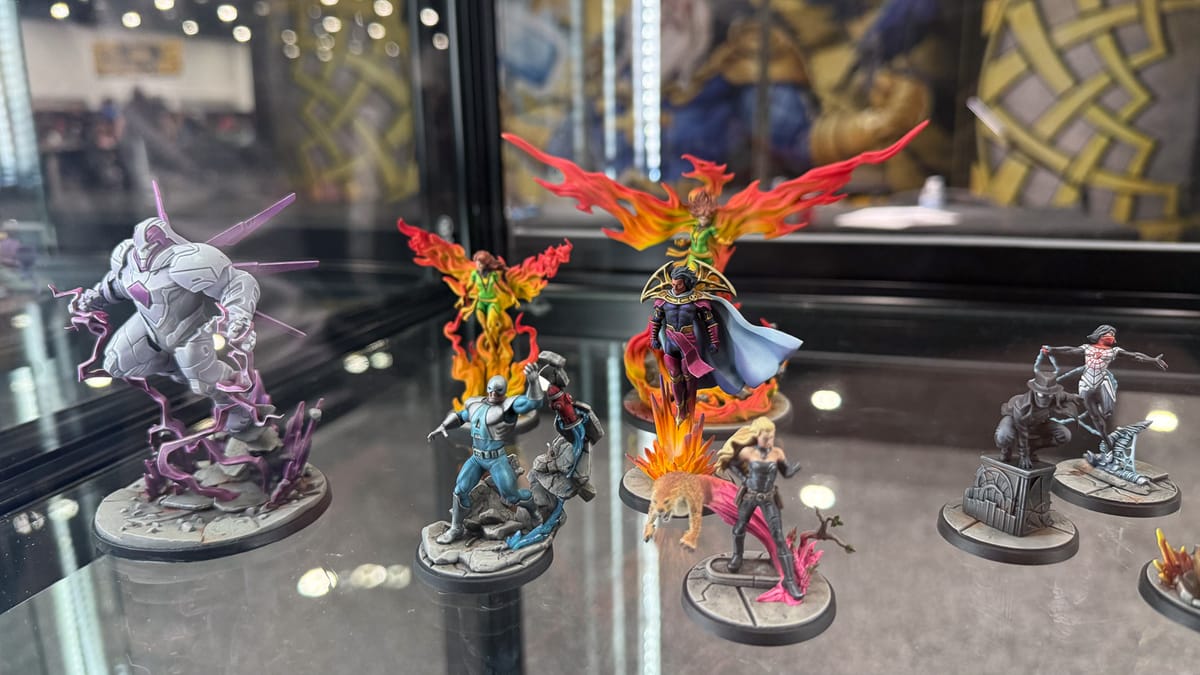
*Audio interview, edited for clarity and length*
At Adepticon on March 30th, 2025, Gaming Trend sat down with Will Shick, the Vice President of Creative Development and Strategy at Atomic Mass Games. He’s one of the biggest creative minds behind games like Marvel Crisis Protocol, Star Wars: Shatterpoint, and many other games. In this interview, we wanted to learn more about the man and the brain behind these products.
GT: Will, what inspires you?
WS: Oh my gosh. What inspires me?
I think my big inspiration is I really get inspired by seeing people connect on a level that is spiritual, beyond just the formalities or the niceties of things. I think that's why tabletop is such a big part of what I love to do, because you can watch two players from across the continents or across the globe come to these tables, sit down, they put down their little miniatures and they start playing a game. And like 15-minutes in all of a sudden they're laughing together, rolling dice, smiling with each other, and they're “talking” with each other. Even in the fiercest of competitions, they're reminding their opponent of things that they might have forgotten, or clarifying to make sure that they're like “oh I really want to do that” through their spoken language barriers.
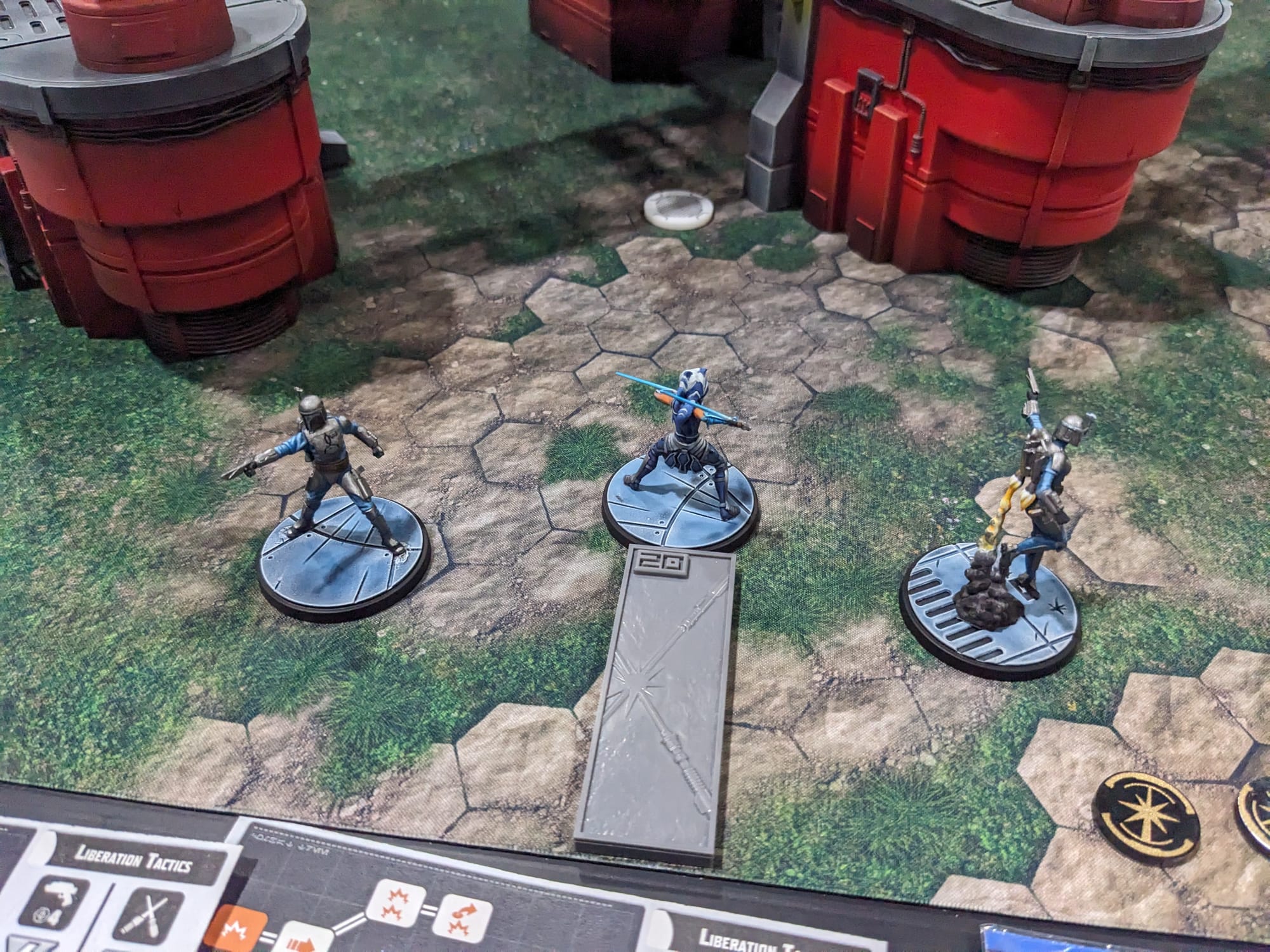
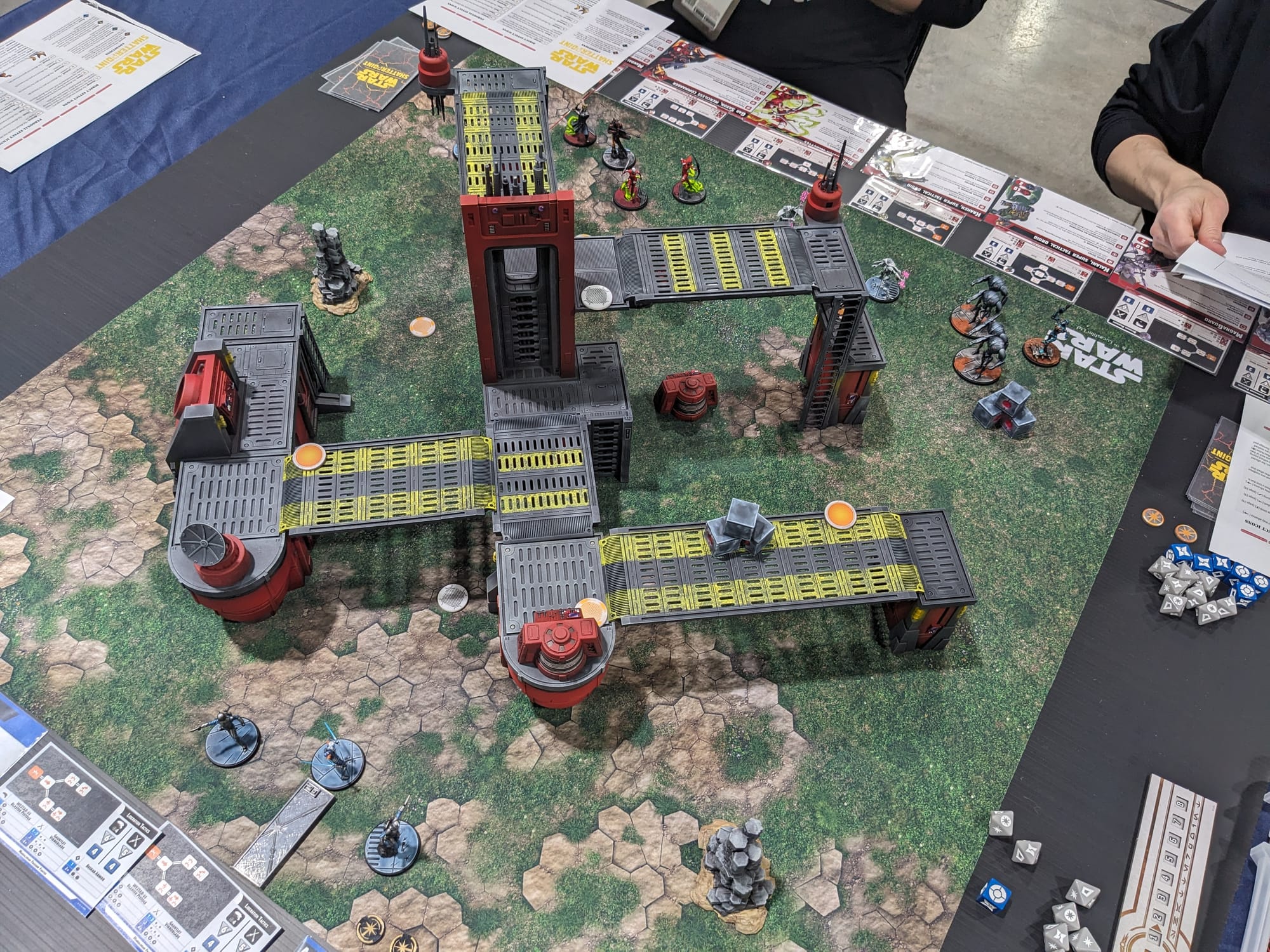

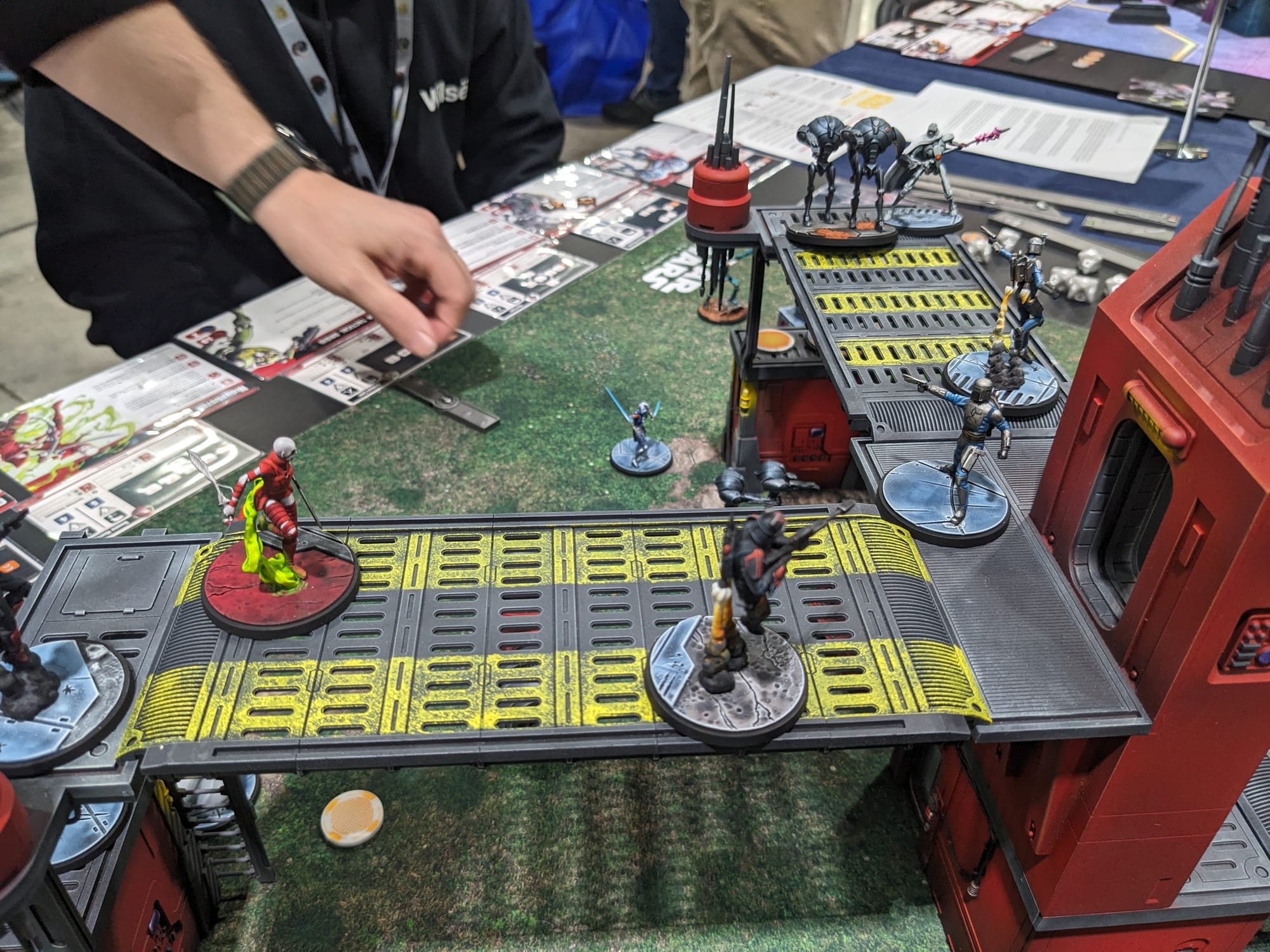
A Star Wars: Shatterpoint table showcasing a new game mode during Adeption
I've gone to places like Italy and France and other spots across the globe and I've been able to play these games with people there because they're a shared language through games even though we can't communicate directly. If someone only knows English and then they play someone who doesn't have English as a second language, you can still sit down and you can actually have this connection with them and you can have a meaningful story experience.
That, you remember forever. That to me is really what drives me to come back every day and to try to make sure that we're making the best possible games because the best games create the best experiences. I'll quote from Star Wars since we're sitting at Legion tables… “like luminous beams are we, not this crude matter,” and I really believe that.
So I think we're at our best when we're making those connections and games as a way to do that to me is phenomenal.
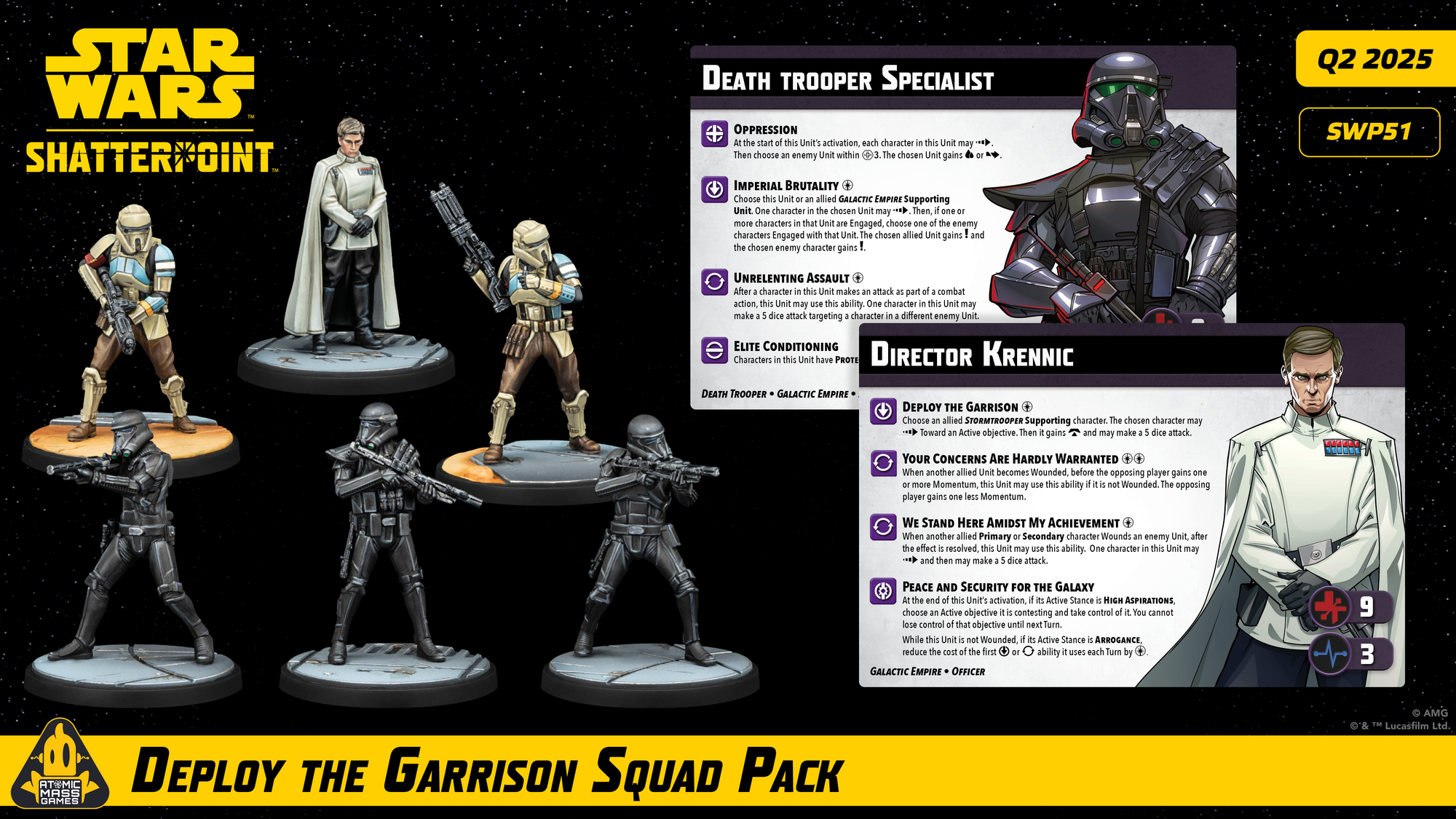
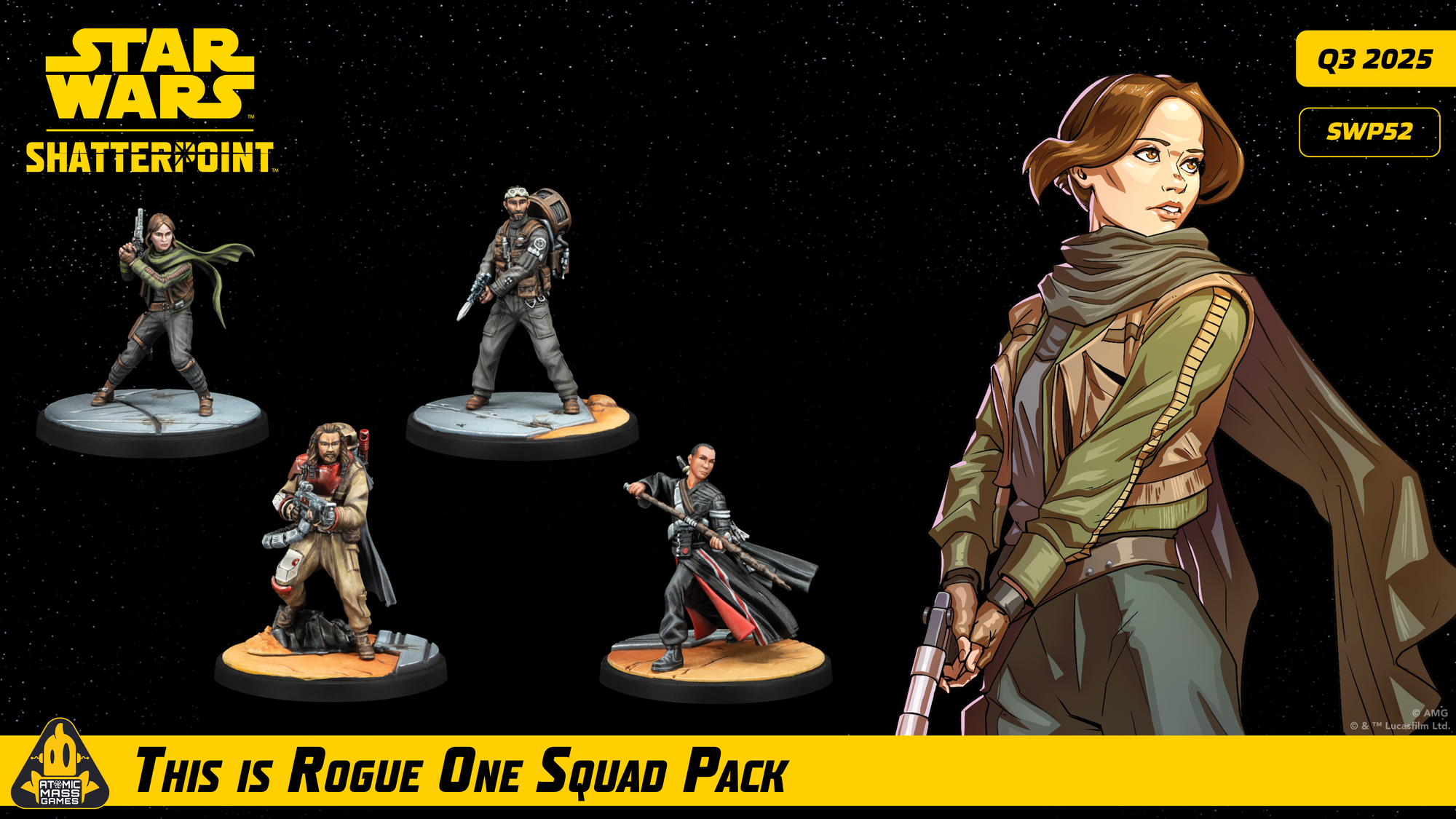
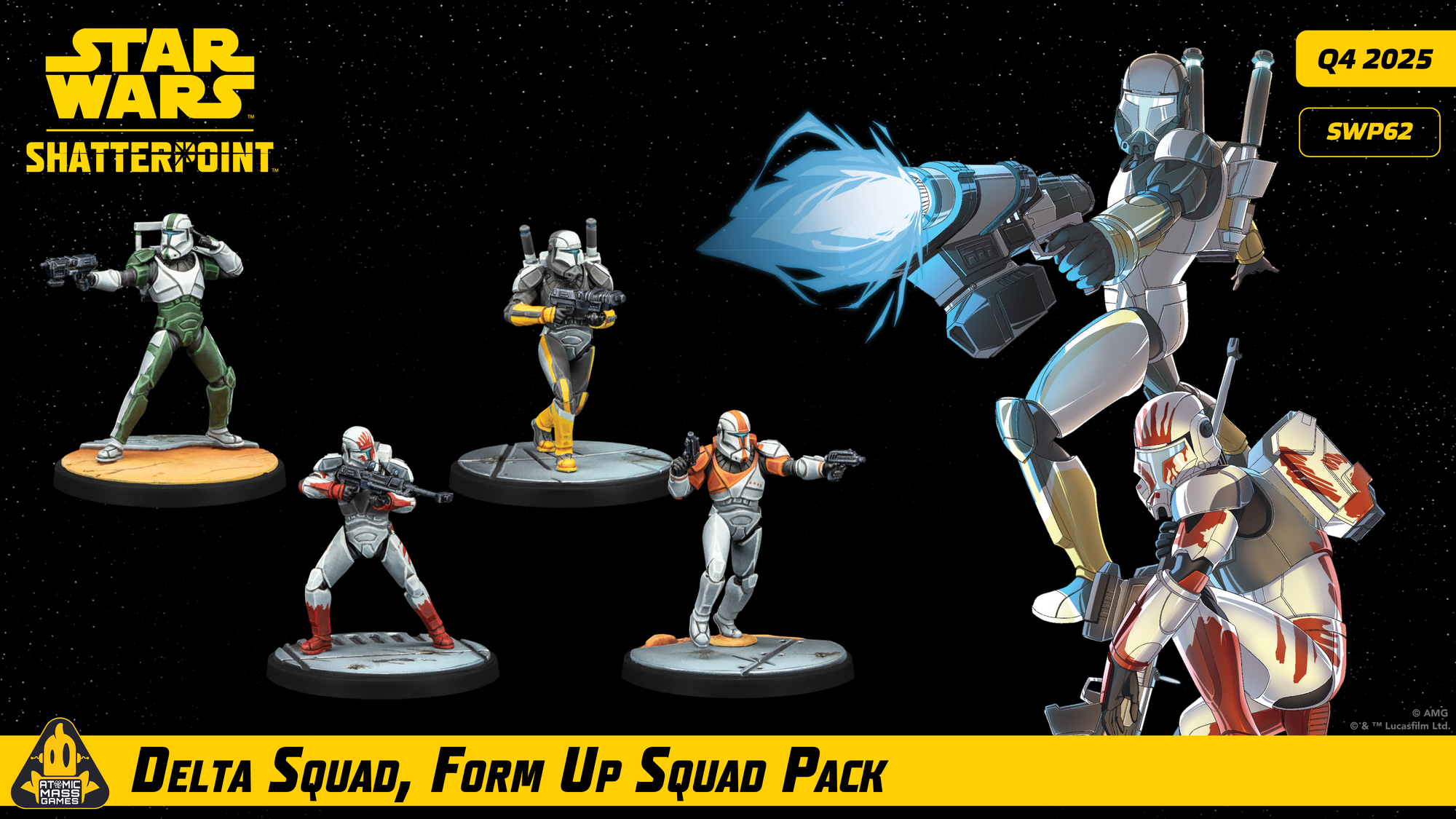
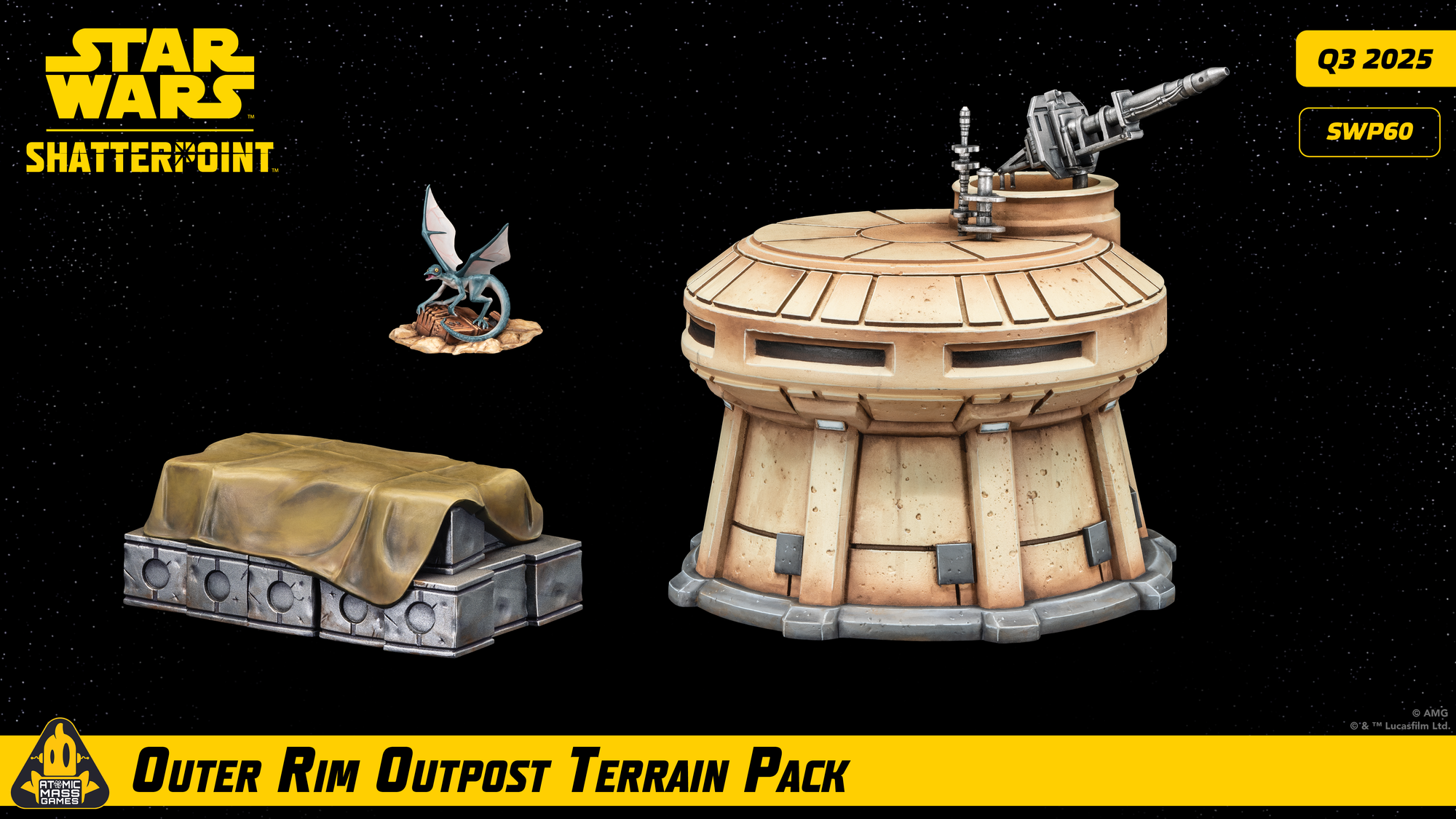
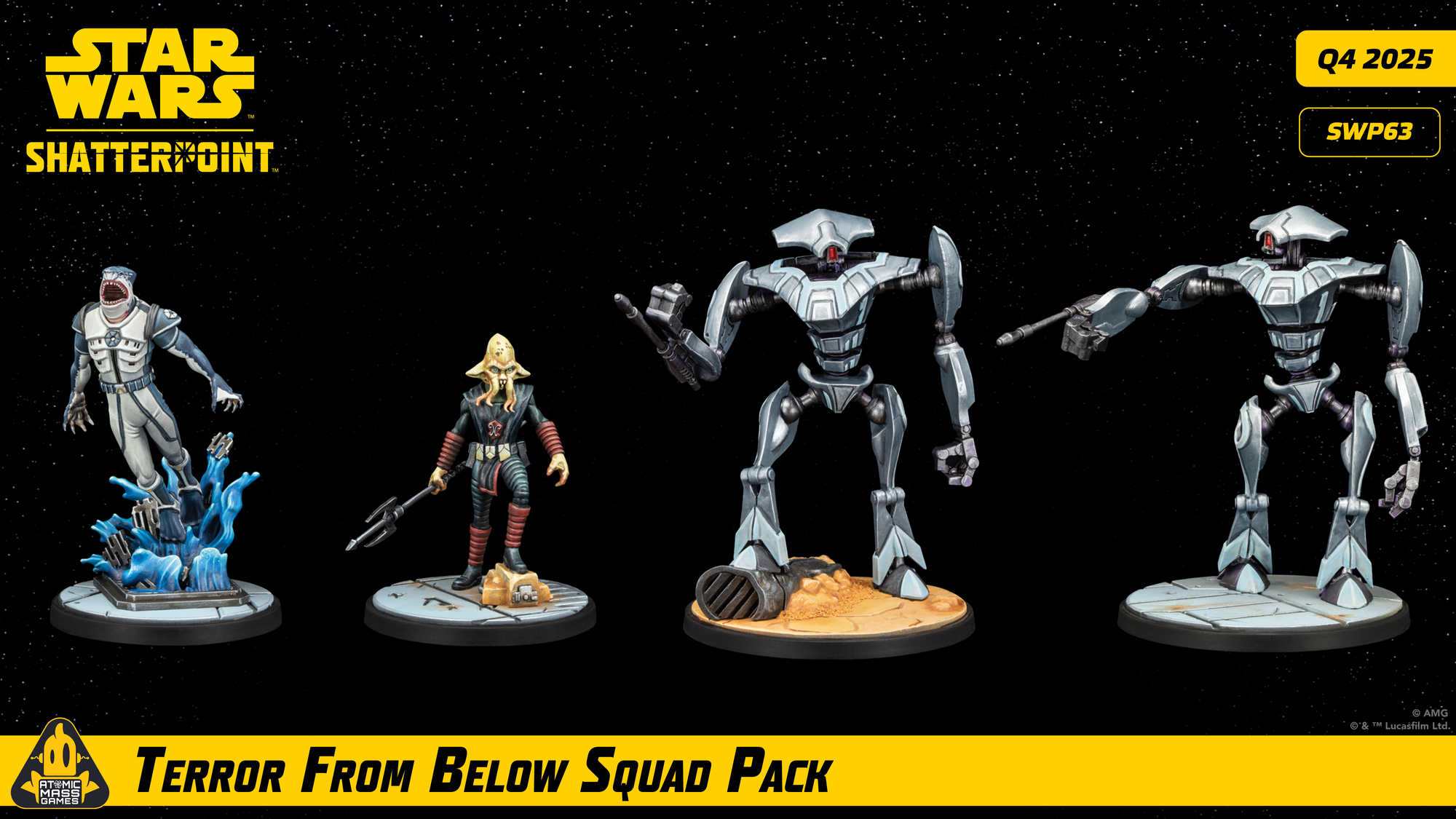
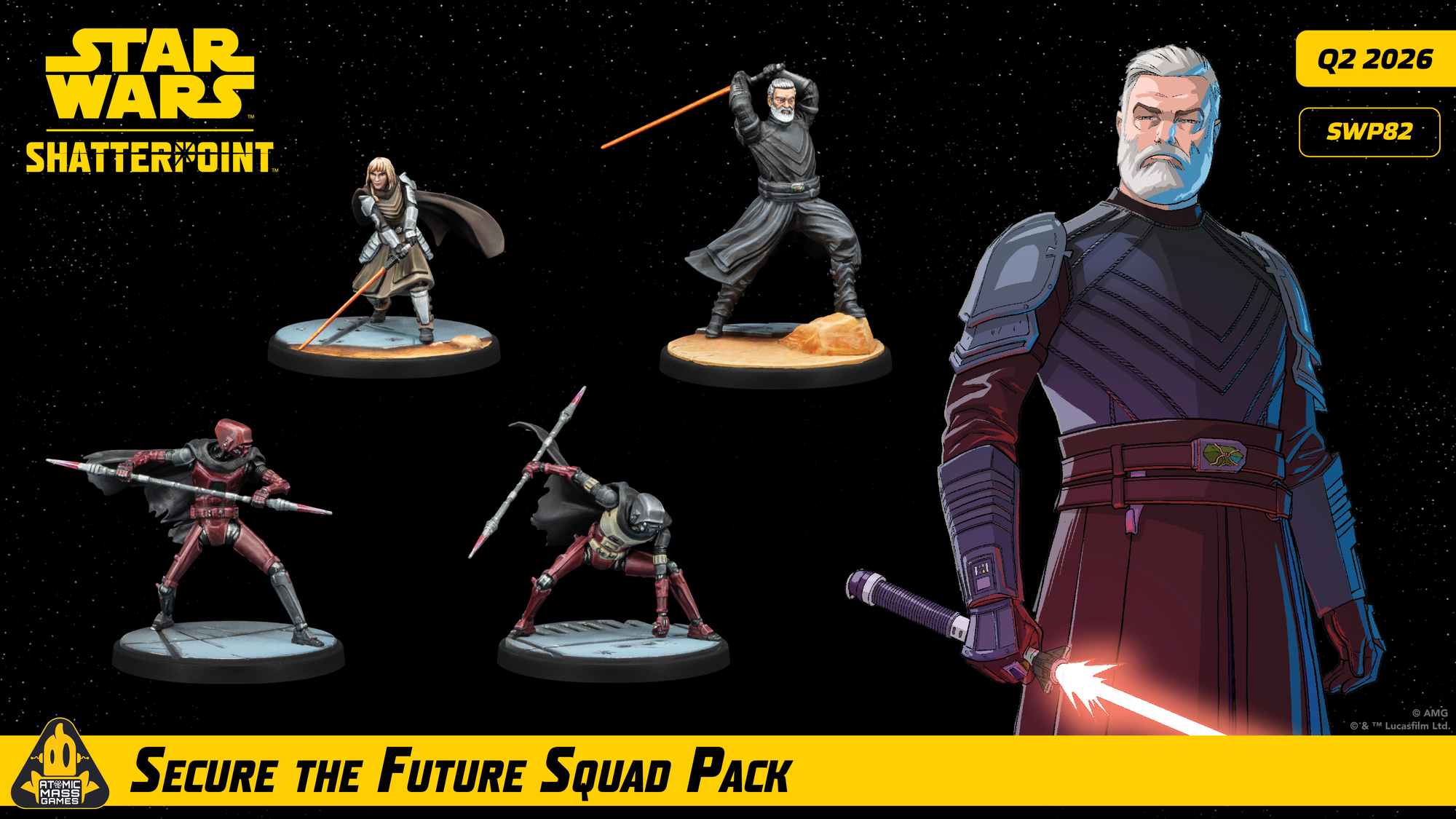
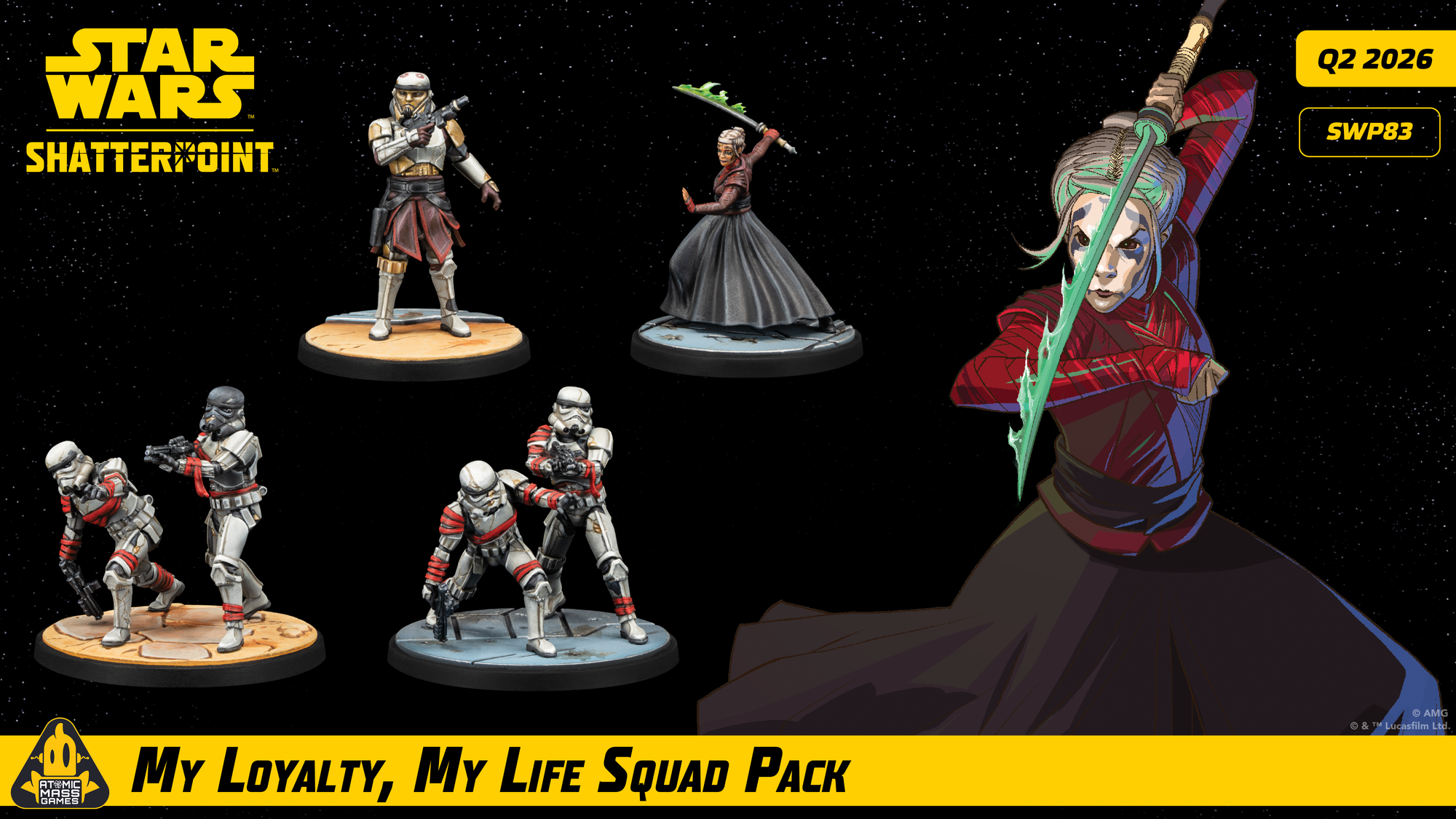
The new releases for Star Wars: Shatterpoint are exciting and unique choices in the Star Wars universe
GT: So your time here at Adepticon, and the work that you do in the office, is meant to strengthen and expand that bridge between all players, right?
WS: Yeah, I mean, events like Adepticon, where we get to see global communities come in and we realize that our local group and our love of the game is shared beyond just what we know and what we do for our day-to-day.
GT: It's phenomenal. It's the same for being in the studio, right?
WS: We come in and we work these long hours (at the con) and we're all zombies by the end of it, but you can't keep people away from their email and their office. Right after you get on the plane, we're just loaded with this creative energy and this hype to be like “we want to make next year better, we want to make these players, like we want to take the excitement they have and we want to grow it.”
We have a little like working mantra at AMG, which is “reach for greatness and then once you grab it, reach beyond.” We really believe in our artistic journey; you always have the capability to supersede what you've done before and that's one of the things that's so miraculous about painting and about playing games that are skill-based. We're really craftsmen and so you get to see those skills grow and you can do that at a pace that you want. You can say “I'm happy with where I am or I want to go beyond.” I'm blessed enough to work with a crew that is all very much driven by wanting to see what's beyond what they can do. (AMG Staff) push themselves like crazy and they come up with wild stuff and I get to challenge them and sometimes they challenge me.
It's a miraculous environment and then you come here and then see players do that. It's a big reward for the payoff and everything.
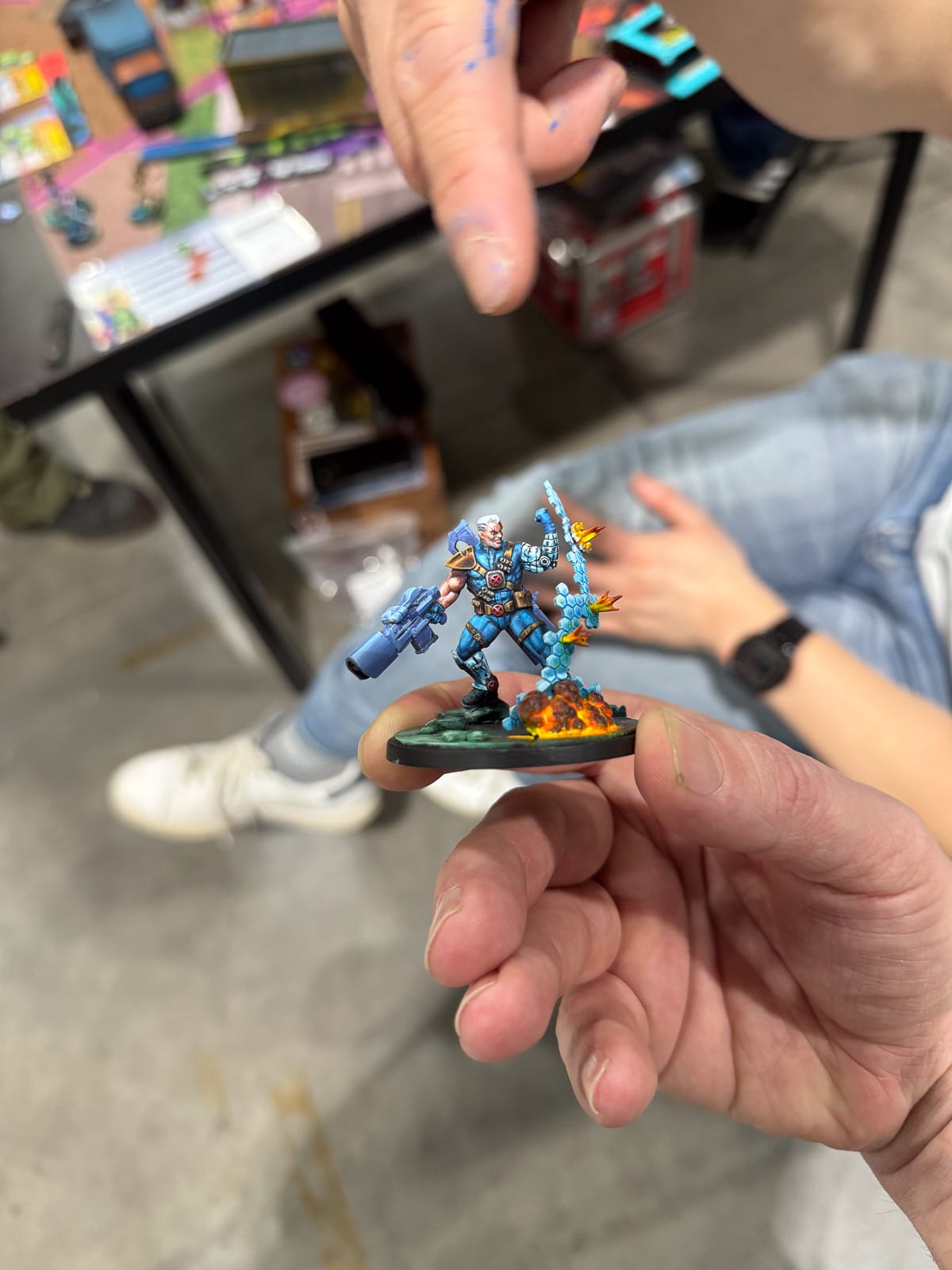
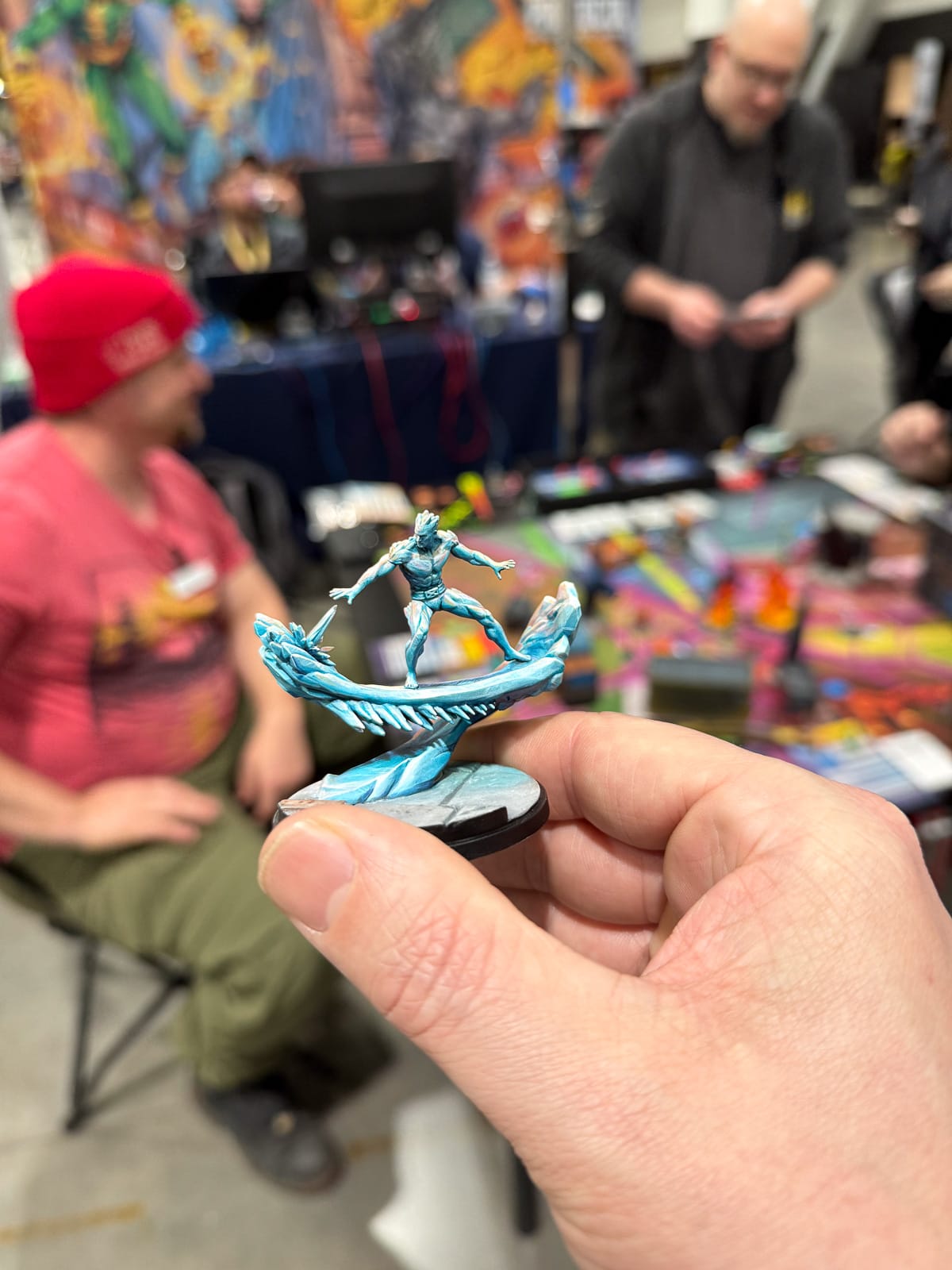
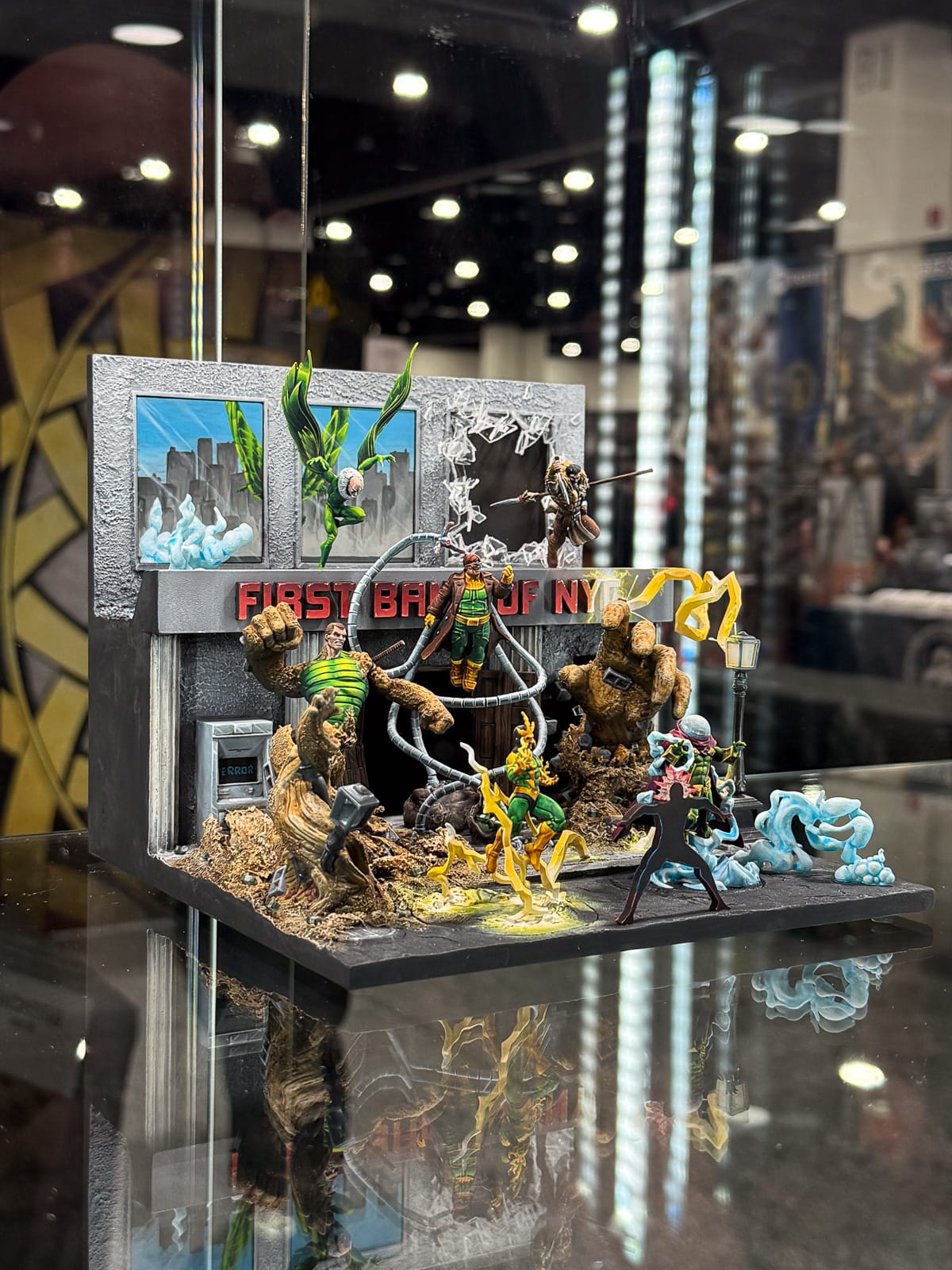
At Adepticon, you can see incredibly painted Marvel Crisis Protocol pieces. Artists are Anthony Wang, Matt DiPietro, and Alec Kozak
GT: How often do you get to actually play any of the games?
WS: So I'm really lucky in that I have a really great family. My boys are 15 and 13 now, and I got them into the games like when they were 9 and 7. They kind of grew up in the game in households and they were very quickly like picking up concepts.
I was a teacher before (working at AMG) and one of my big things when I was doing teaching as an assistant teacher with my lead was we did a game club and our class was like 4th-6th grade. I kind of honed my skills on how to introduce complex game concepts to younger audiences through that. So, my thing has always been ‘you can teach anybody at any level anything.’
It's just how you break it down. Kids are really smart; they're smarter than we give them credit for. You have to speak in a language that they understand and you have to understand that you can't throw everything on them at once.
It's definitely one of those things where I do get to play the games at home quite a bit and I've even gotten my youngest kind of into painting stuff.
Then of course, we get to play games in the office quite a bit. We playtest, which doesn't really count for a game because you're working it differently, but we'll play games at lunch. Just different tabletop games, like even at this con. So we do get to play games quite a bit.
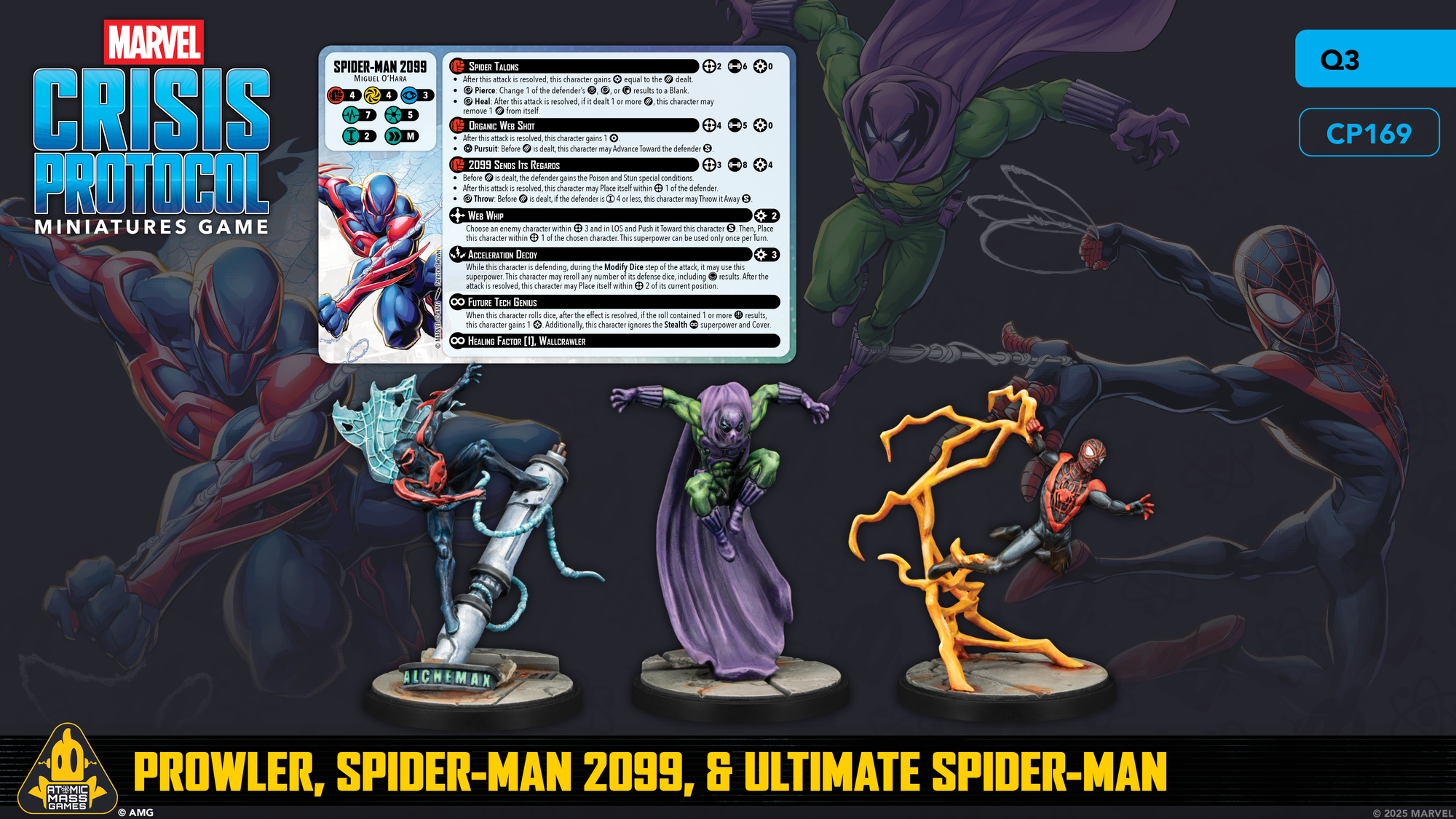
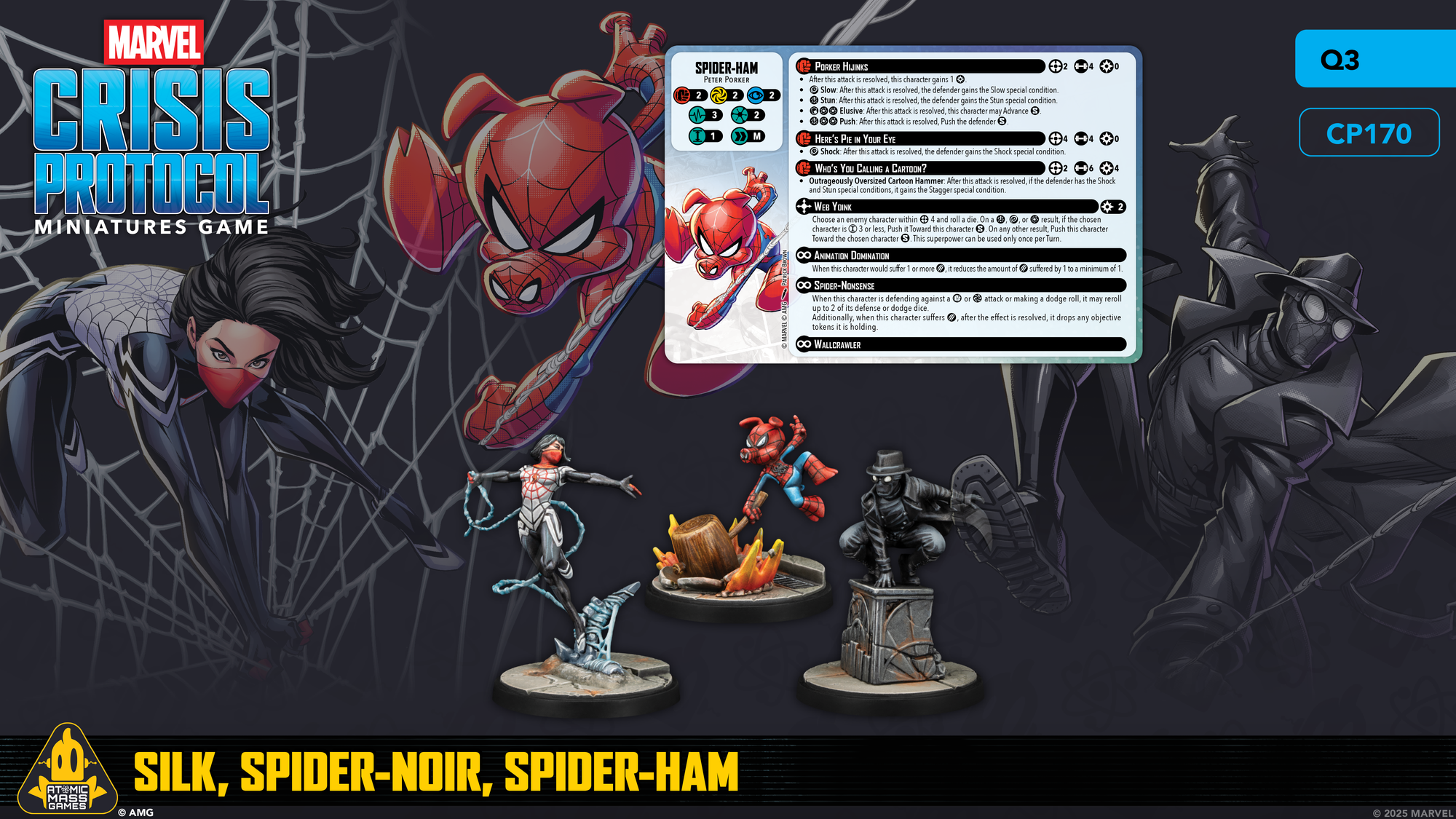
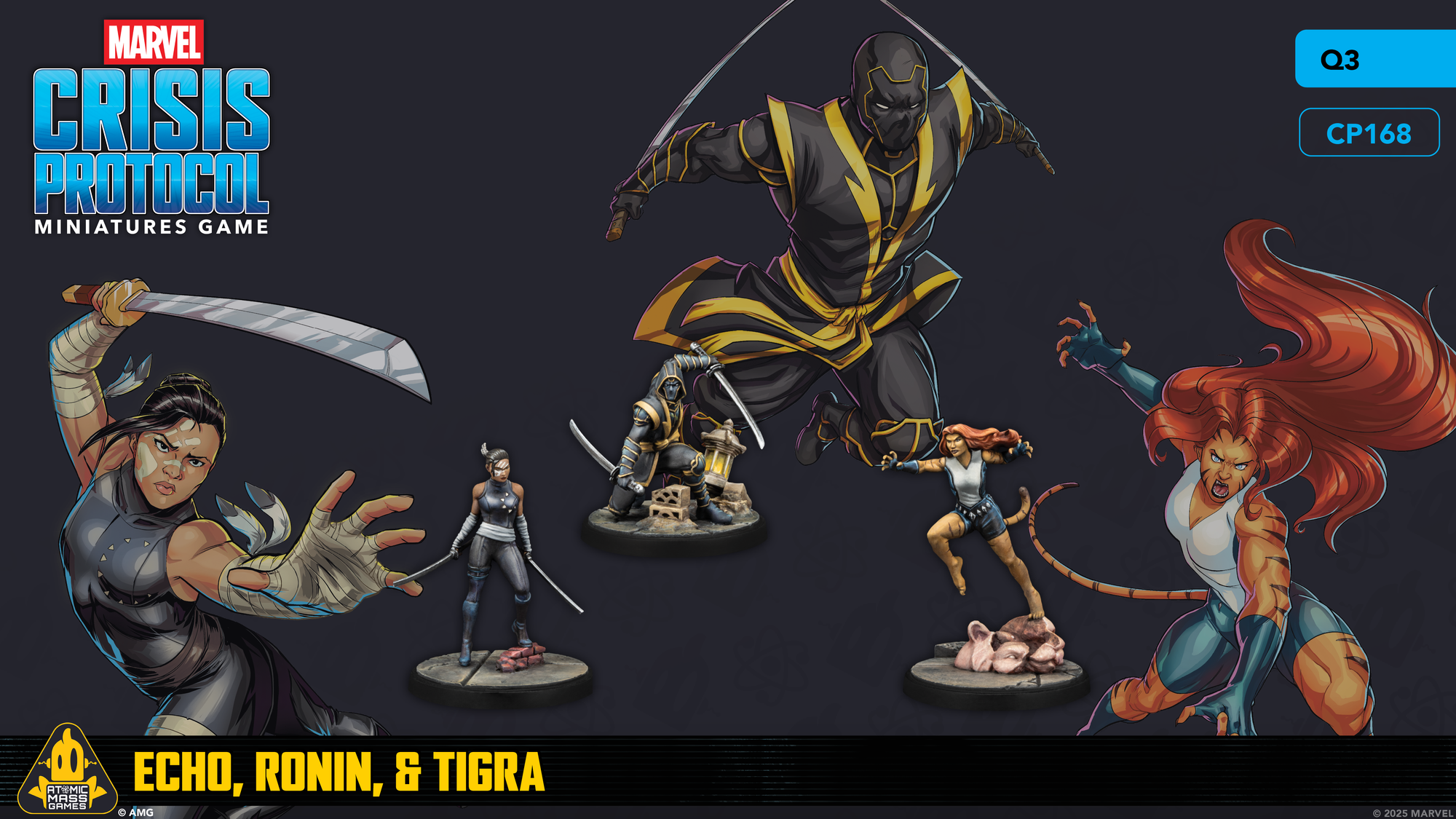
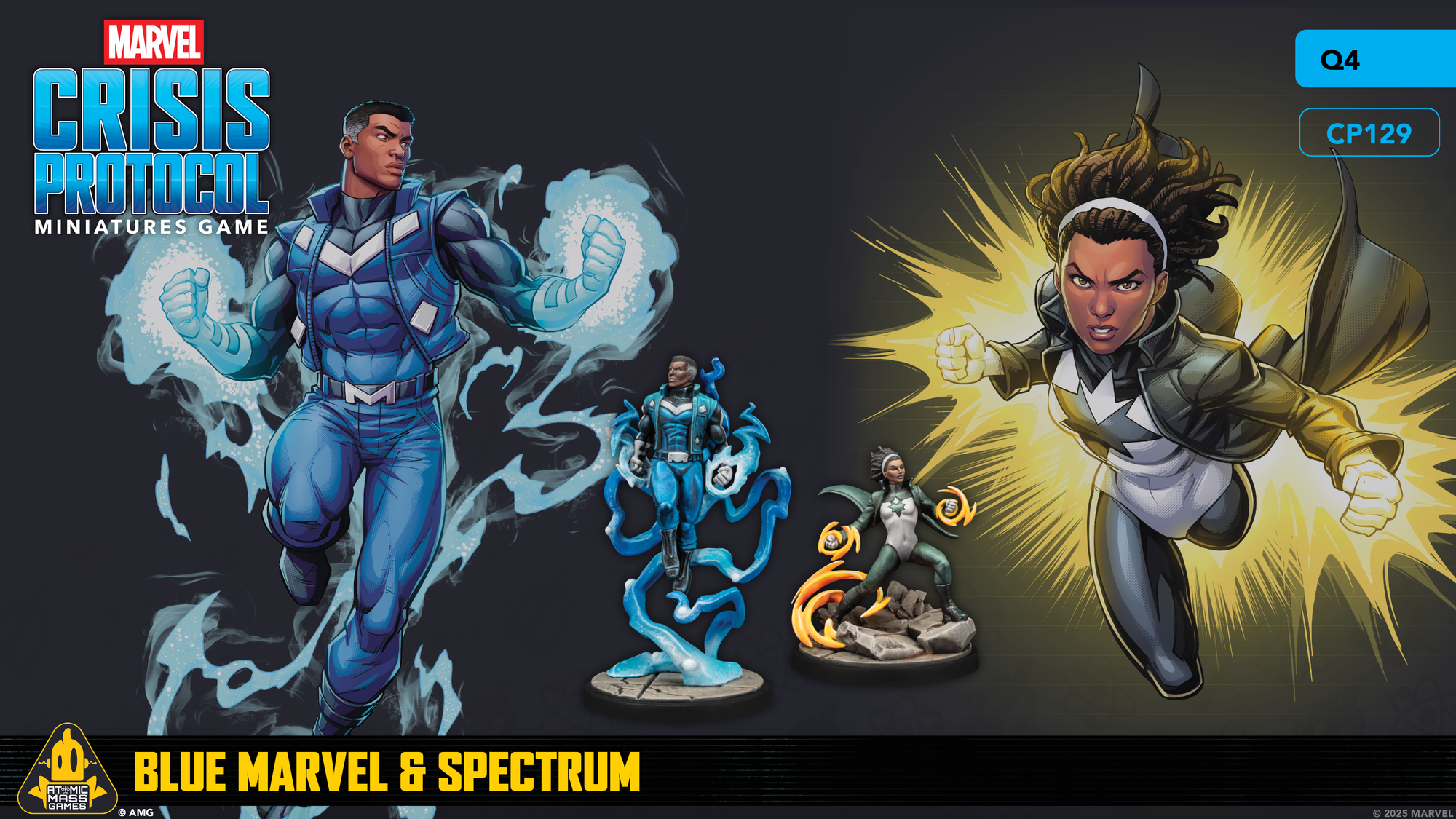
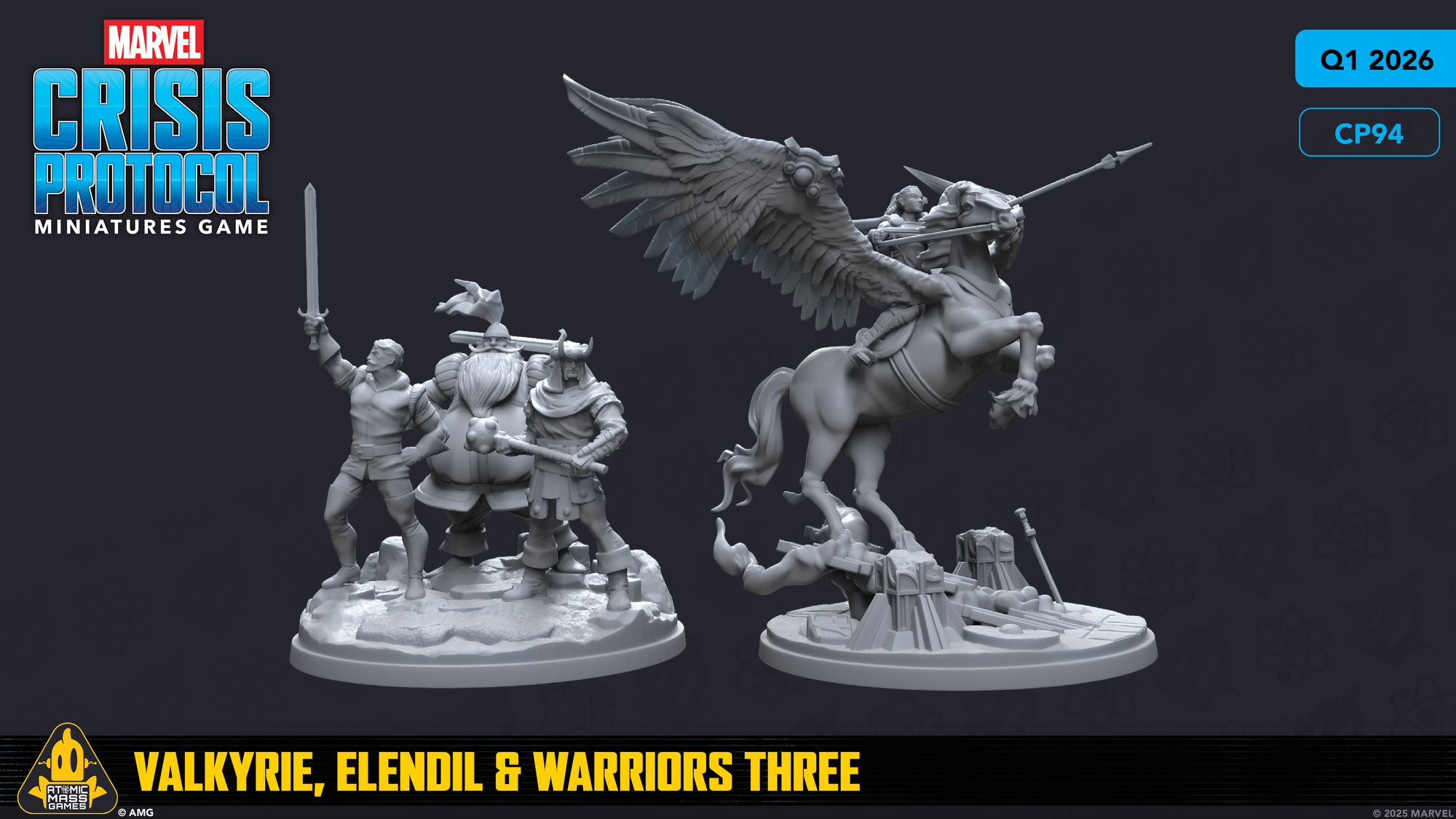
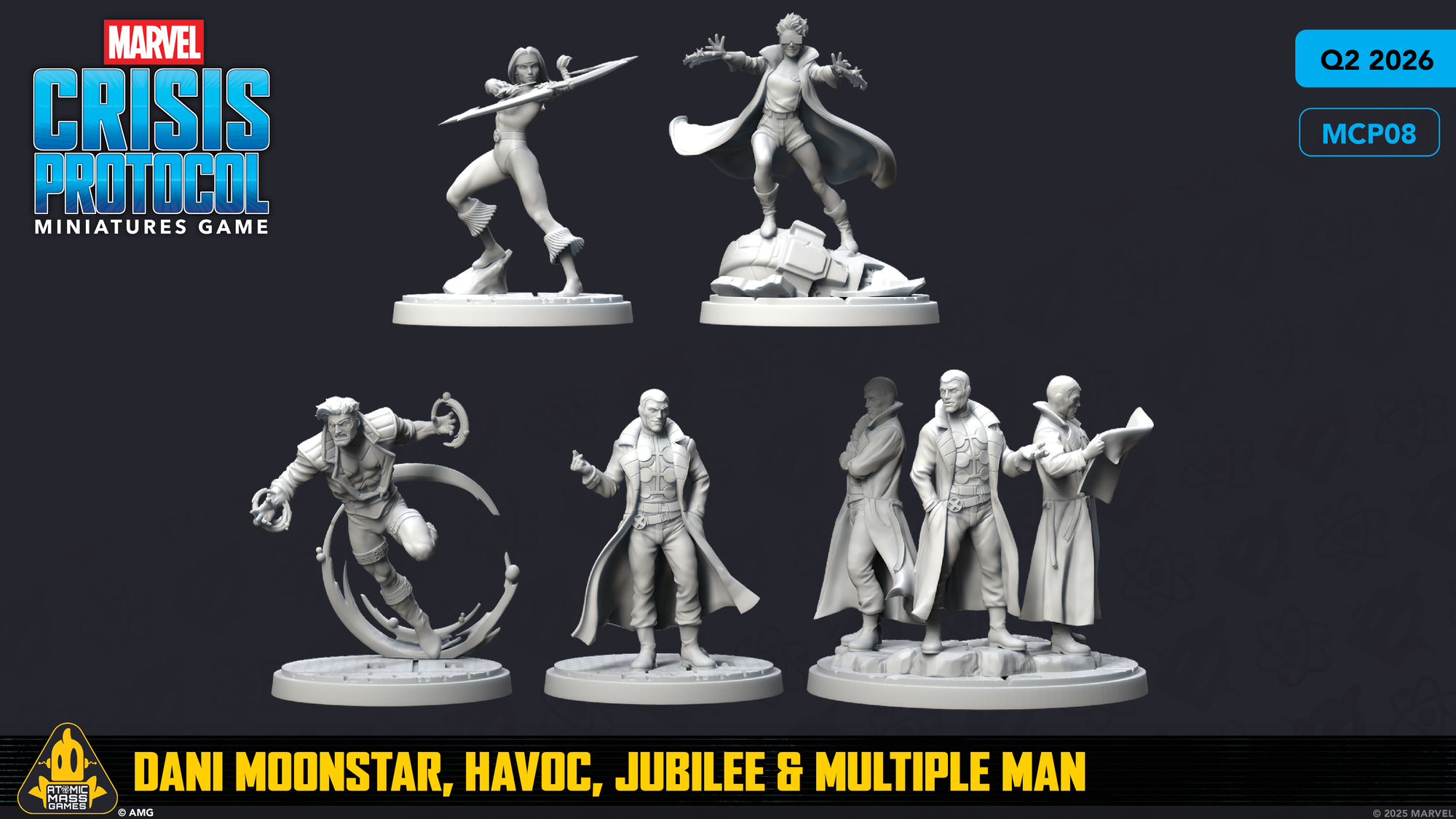
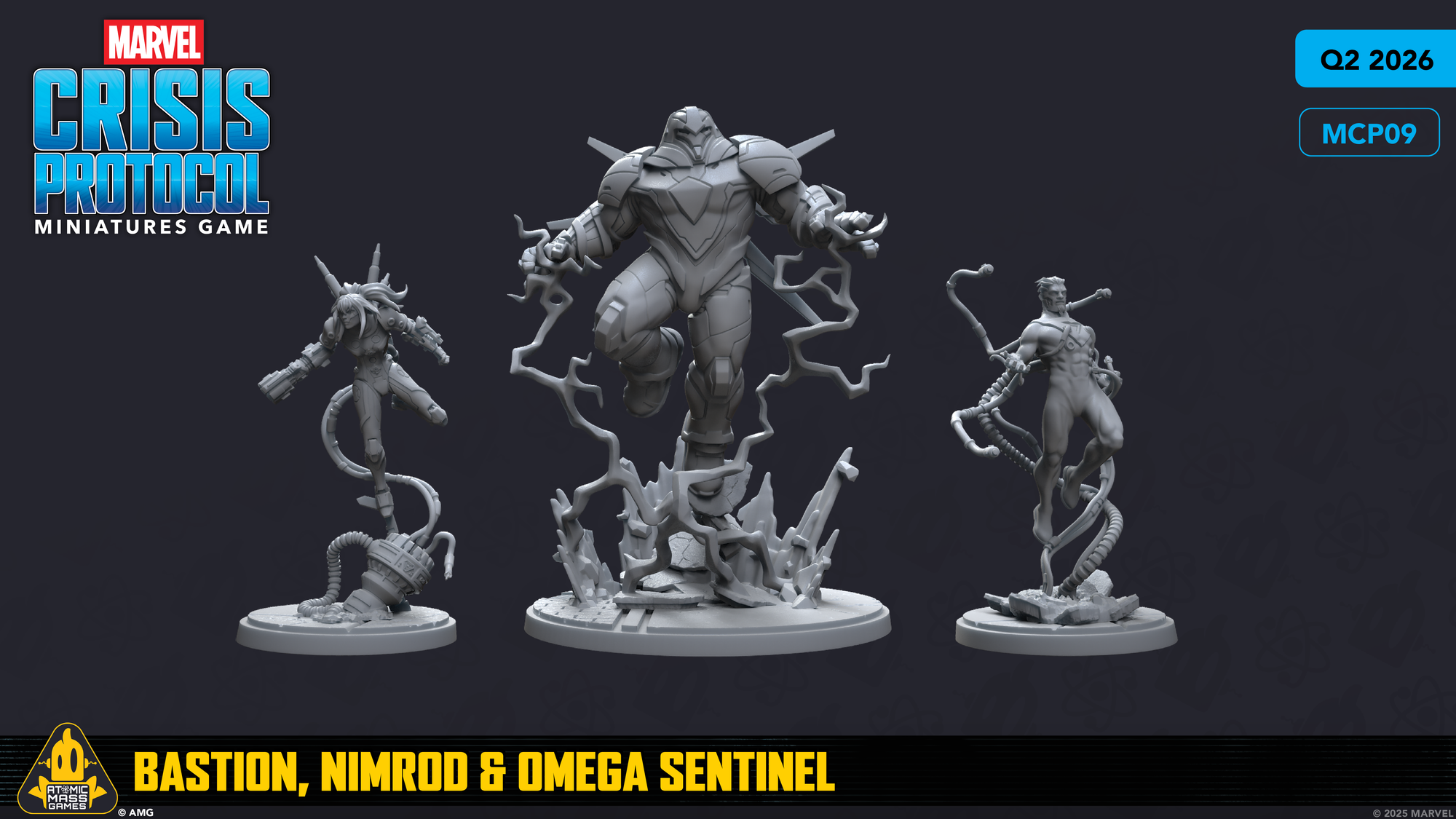
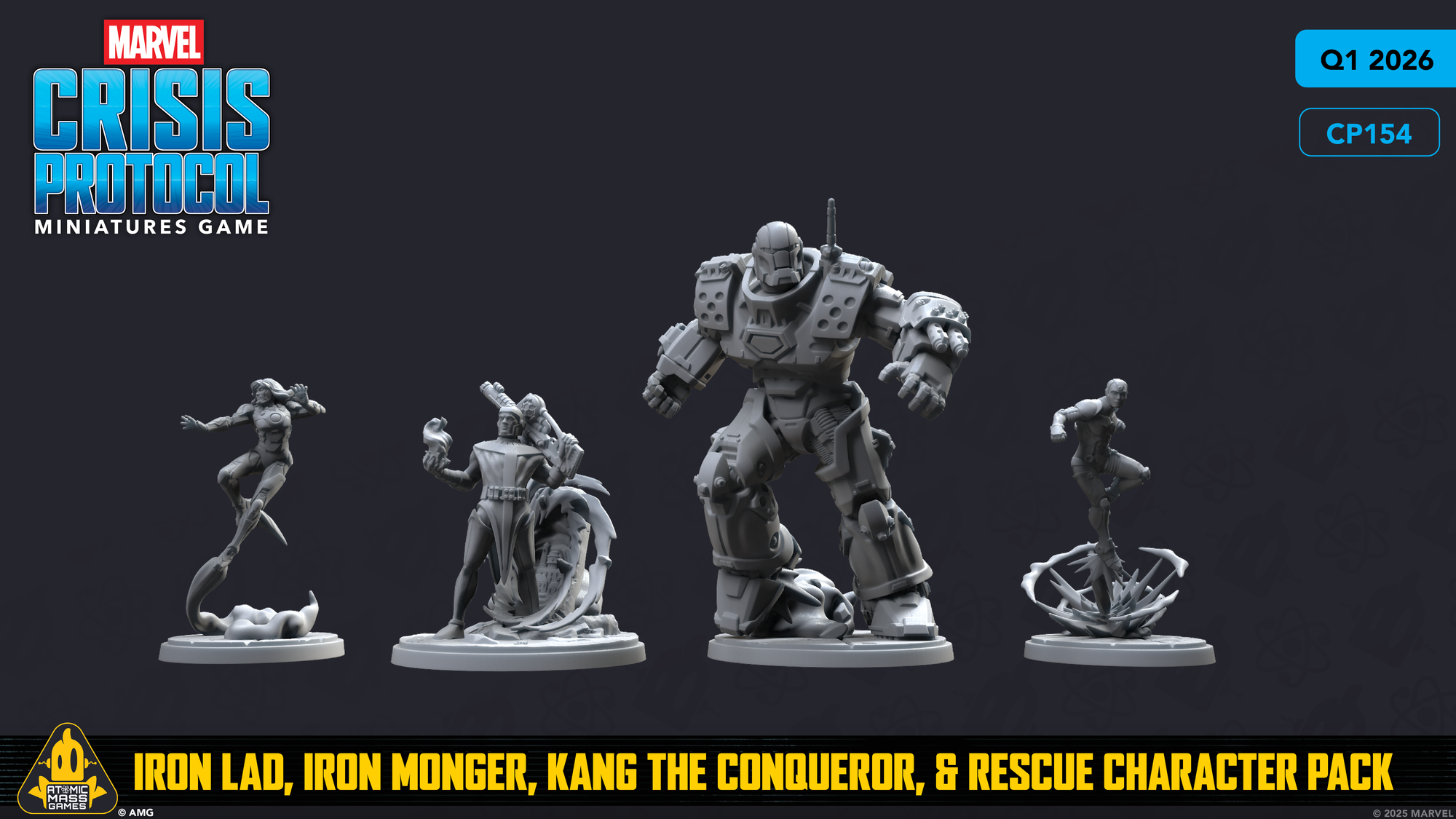
Marvel Crisis Protocol is expanding into some amazing areas, including the Spiderverse, Nimrod, and X-Factor!
GT: What got you in the tabletop game world?
WS: My story is not unique among so many of the folks who work (in this industry). So it was my local game store. To this day, I still firmly believe that the local game store is the beating heart (of the game world). I was like 12 years old, and I had been playing the Star Wars Decipher TCG, like everyone did, right? It was one of the best card games ever made - it was monolithic. Before I started playing that, my first true TCG was Marvel Overpower. I was getting it at mass market stores going to Target and Walmart, and those stores.The third set came out and the big stores stopped carrying it, but I still want to get it. So my mom went to the phone book, as you did back in the day, and she looked up this place called ‘Action Cards and Comics.’ She called them on the old landline, found out they carried card games like Marvel Overpower, packed me in the car and we drove there, and that's how I got introduced to my games store. From there, I moved onto the Star Wars Decipher TCG and so that store became my place to go get cards.
I played Classic BattleTech and built hobby model airplanes with my dad. We'd build F4 Wildcats, F-14 Tomcats, and giant B17 bombers and all this stuff. It was a way to connect with him that didn't involve a ball. So we'd sit in the basement and we'd huff like that old Tester's blue. So I kind of knew what miniatures were and what modeling was.
So one day I walked in and the store had recently picked up Games Workshop; Warhammer Fantasy and Warhammer 40K. The guy who was running the store (who would later be in my wedding party as one of my groomsmen) approached me and he was like “hey, kid, you really like Star Wars, right? I bet you'd like this stuff” and he points to the new shelf with all the Warhammer stuff on it. I grabbed this free catalog for the 1994/1995 Citadel Miniatures Catalog Games Workshop 94-95. So I started flipping through it and I remember they had like a little mini battle report of like Imperial Guard versus Orks, all written up in that old style with all the colors. I was the prime demographic for this and I was hooked right away.
So, like the next day, I ran back. I bought the second edition starter, and I put it all together. Azrael was the first model I ever painted. Then, I went for a sleepover to one of my buddy's house and we played on his bedroom floor.
We made little cardboard walls and buildings and stuff, like a little cardboard dreadnought, and we played. I fell in love with Warhammer and miniatures and all of it immediately; I remember thinking that this game is phenomenal and I went all in.
When I was 14, I wound up doing the demo day for [the game store]. They set up this regular Thursday demo day where I would just be there with my stuff, show the game to people who would come in and teach them to play Warhammer. Then I started running tournaments for them and I kind of just fell into working for the store. That was kind of my high school thing, doing all the miniature stuff.
That was how I found out about miniatures - the local game store had the wherewithal to have the products and to know that this might appeal to some people in the area. If it hadn't been for that, the crazy part is I would likely not even be here.
So for me, I think of all the kids out there who are walking into a core hobby store for the first time. Today, I hope (AMG) product is what we get to do for them now, and get them into it. We get to work with Marvel and Star Wars. We got our version of the Interrogator-Chaplain on the shelf where kids can look at it and be like “you're speaking my language.” This is something that I keep always close to the heart and I and other AMG employees really believe in.
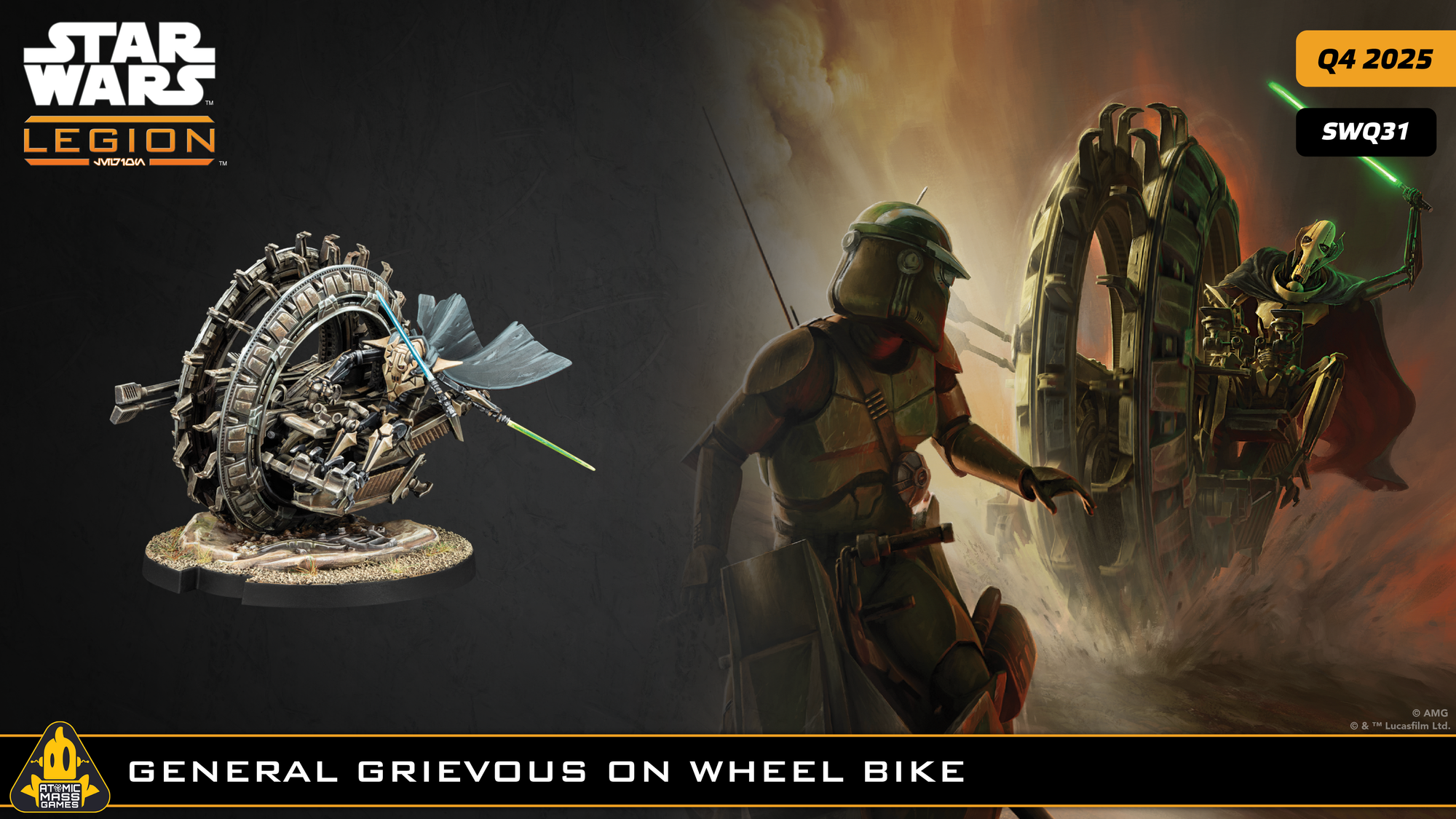

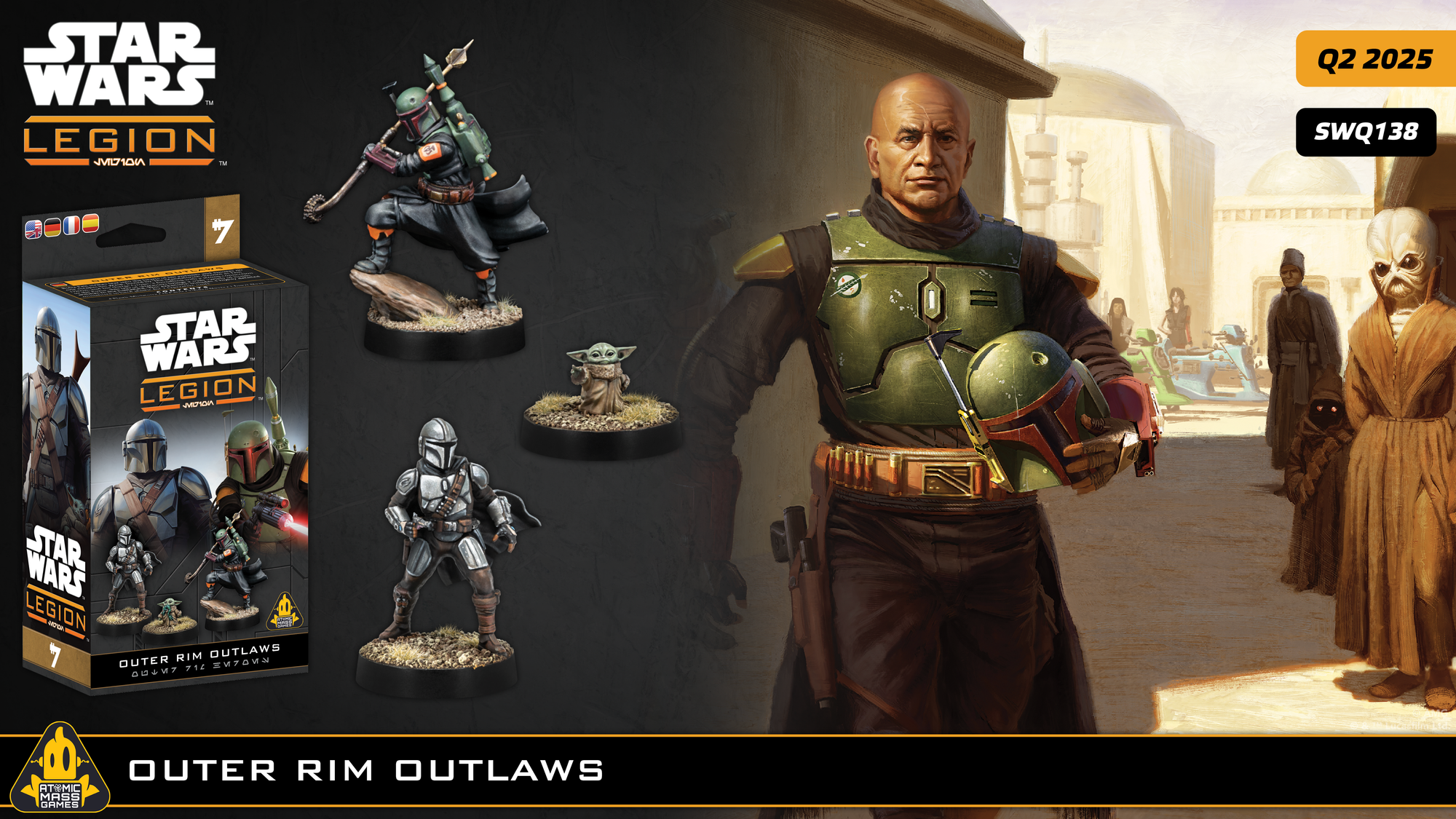
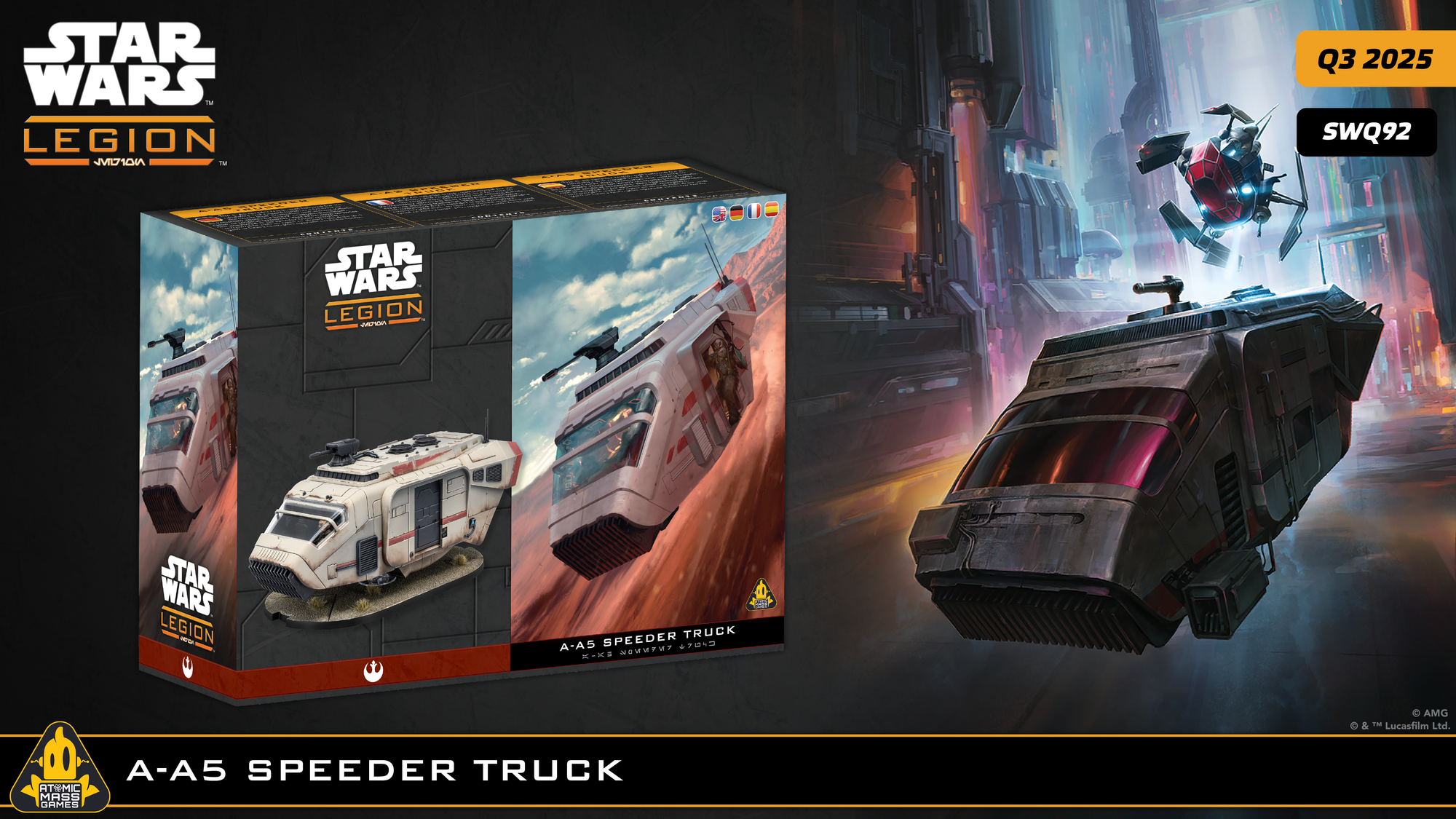
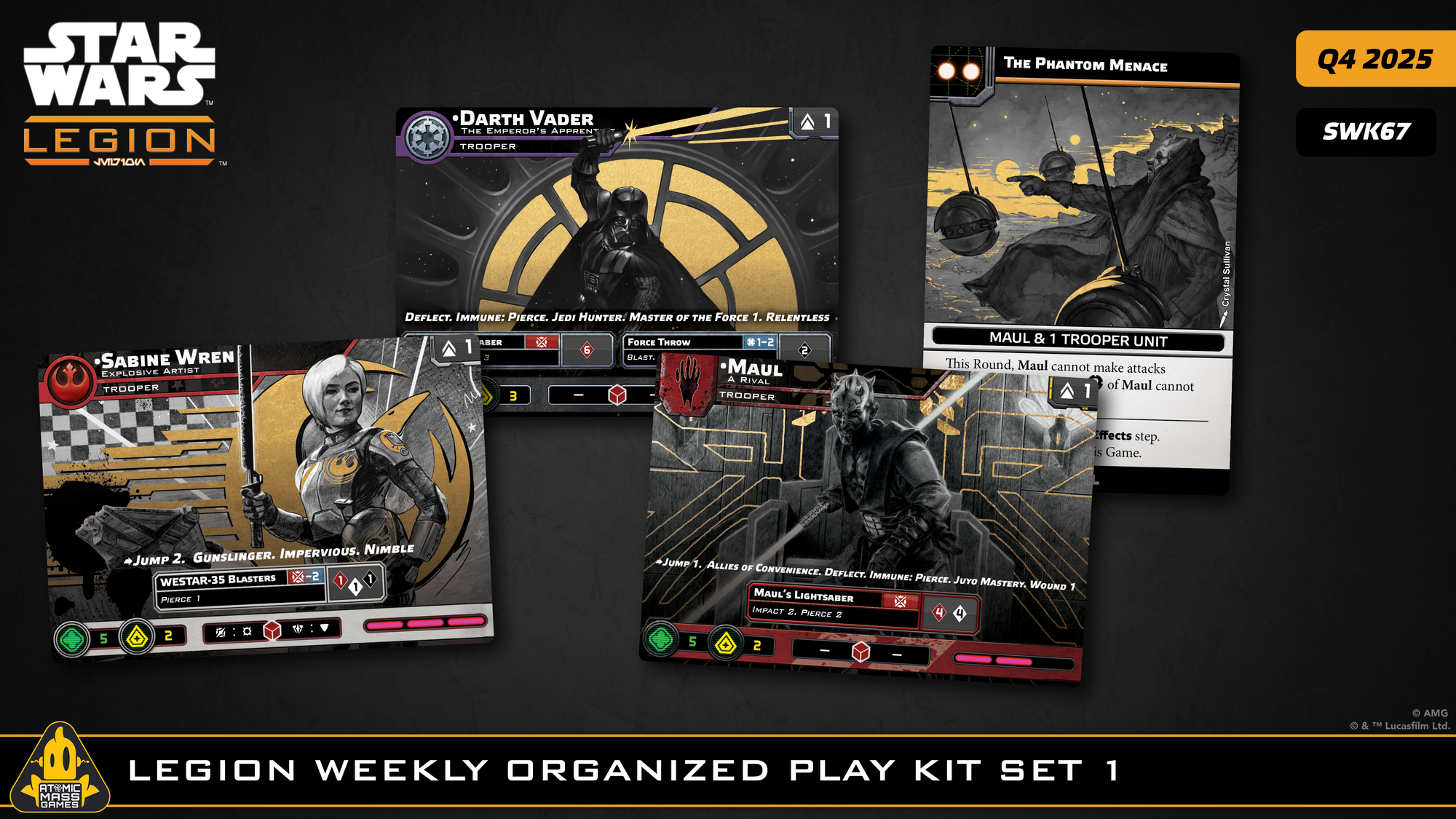
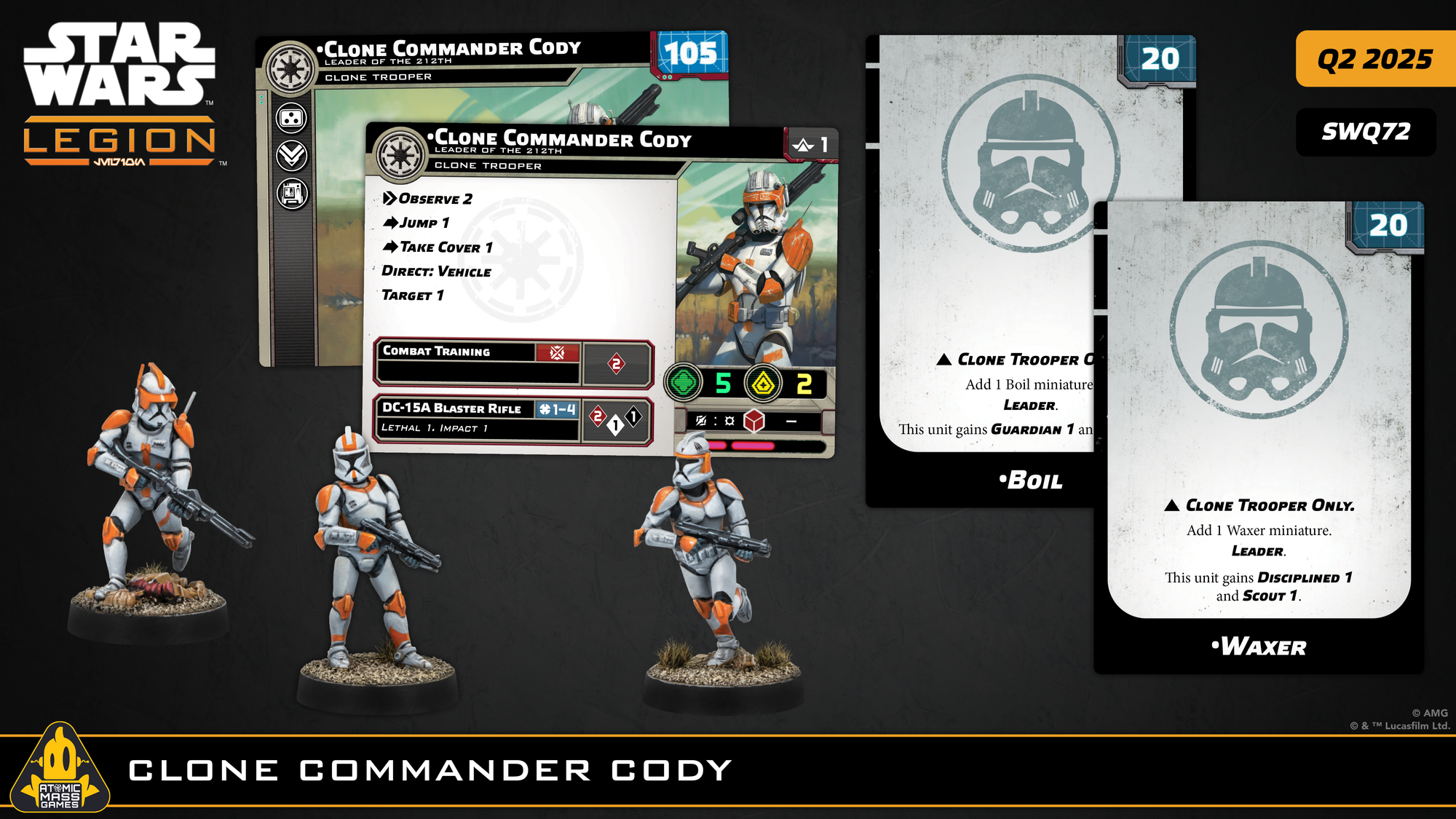
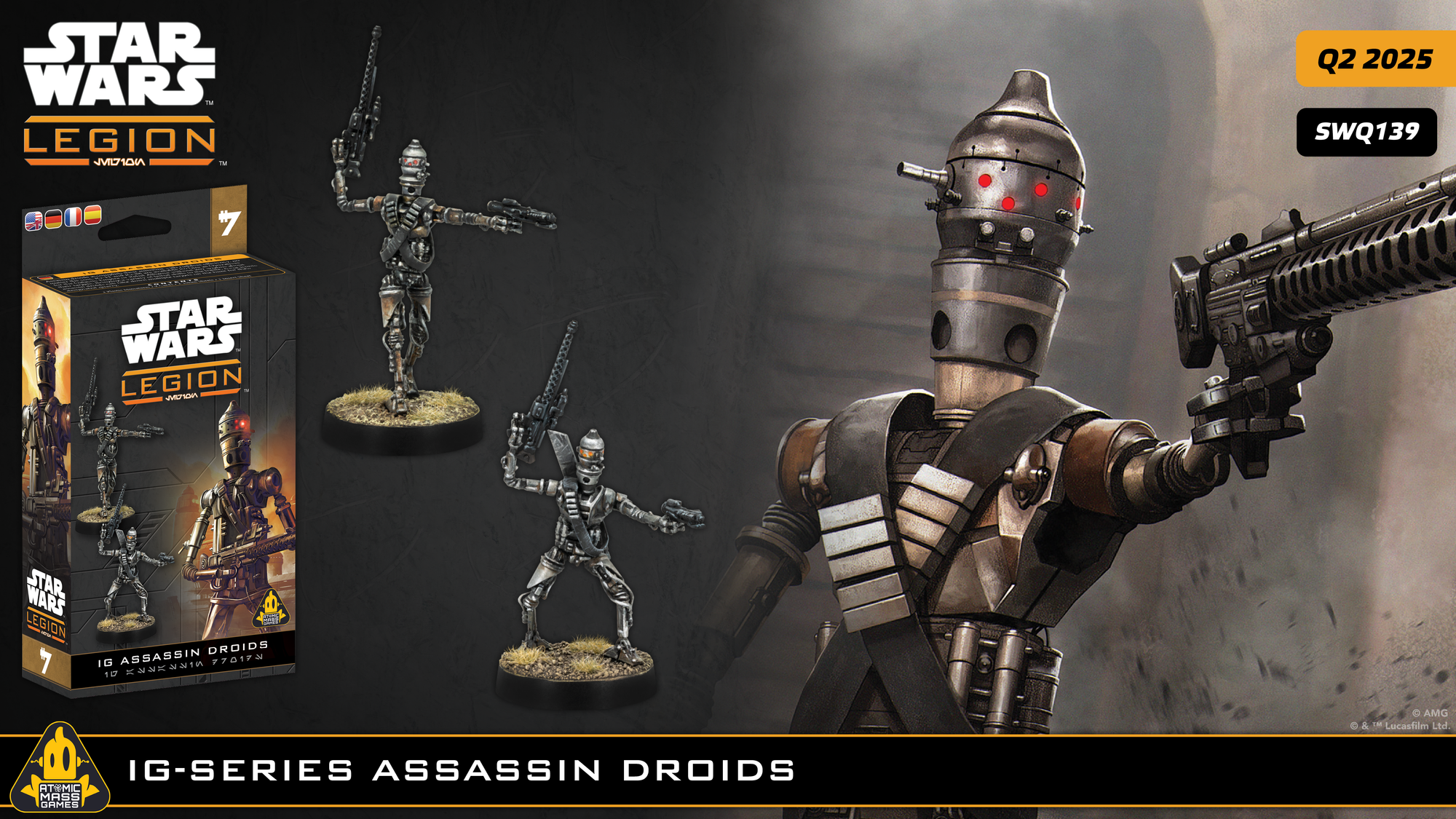
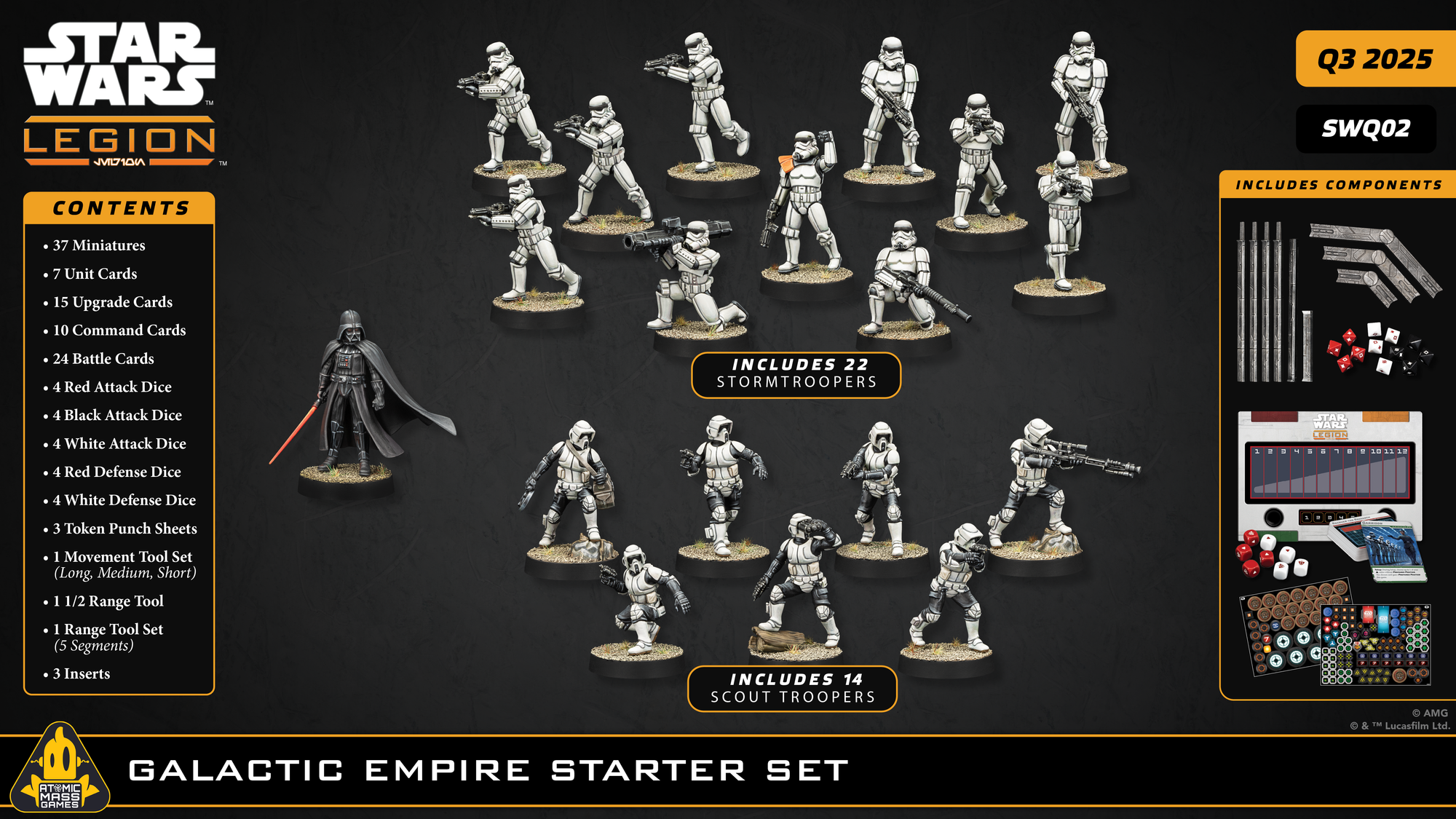
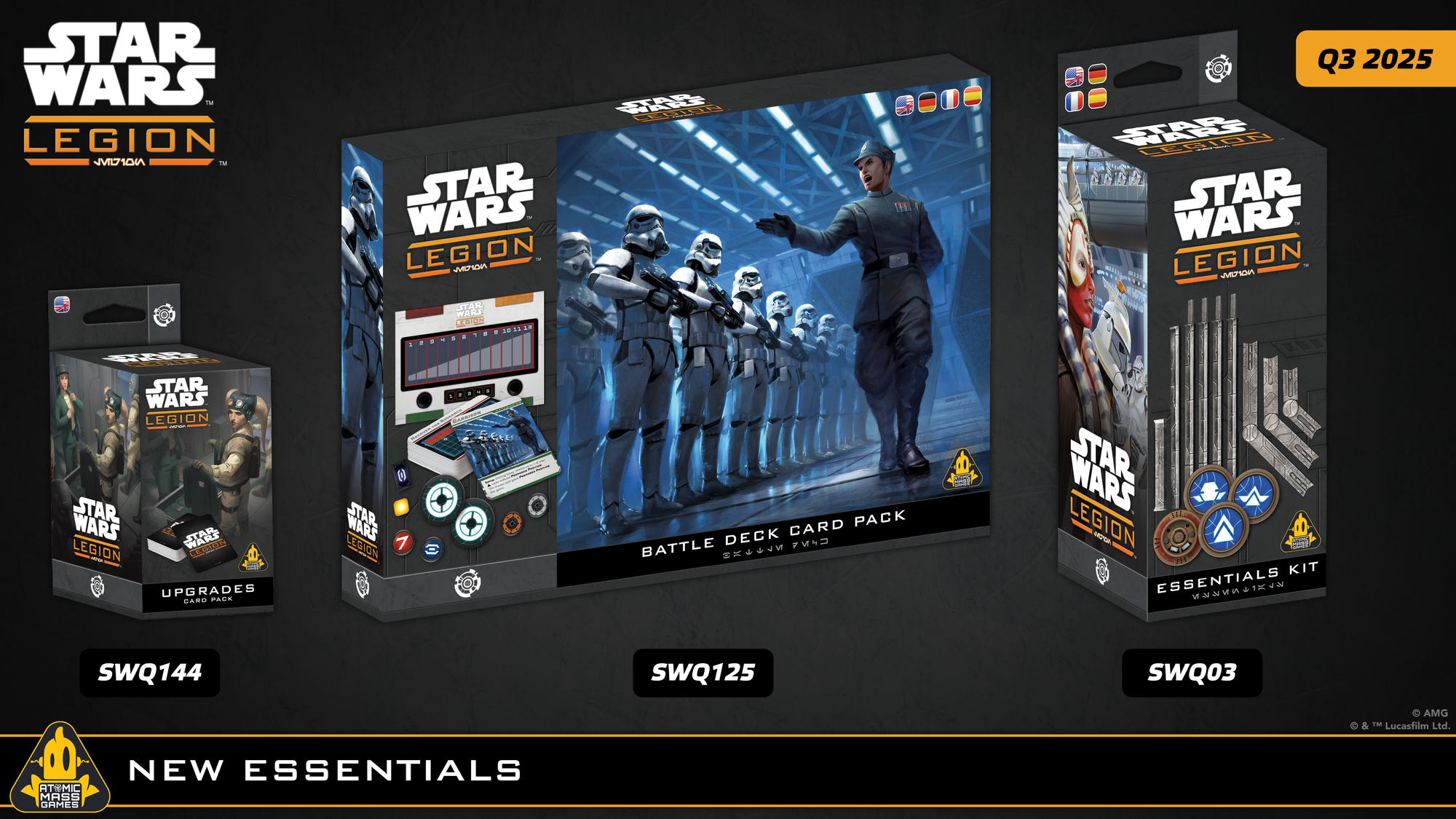
Star Wars Legion had some of the biggest announcements, including new starter sets, some awesome sculpts like General Grevious's bike, and more!
GT: So your friend, the comic guy at your game store, was he the first person to introduce you to comics?
WS: So my mom actually introduced me to comics. I think I was like six and she had just came back from the store. She gave me some Spider-Man comics and was like “I think you might like to read these.” Like most kids, I had seen Spider-Man and his Amazing Friends on VHS tape. I read the comics and discovered I do really like these. So Spider-Man's near and dear to my heart; he's my number one. So, Spider-man comics led to X-Men and all the other different ones.
We have folks at AMG who are true like comic collectors. Like our creative director, Dallas Kemp , he has like the entire original run of X-Men. He's got comics he’s collected over the course of his career and life. Our director, Josh Cologne, is super into it as well. I just dabble in it. I like the apps, because I can just go and I can read full runs and the trade paperbacks. I love the stories and the art; it’s a really powerful method to convey narratives, themes, visuals, and all of that.
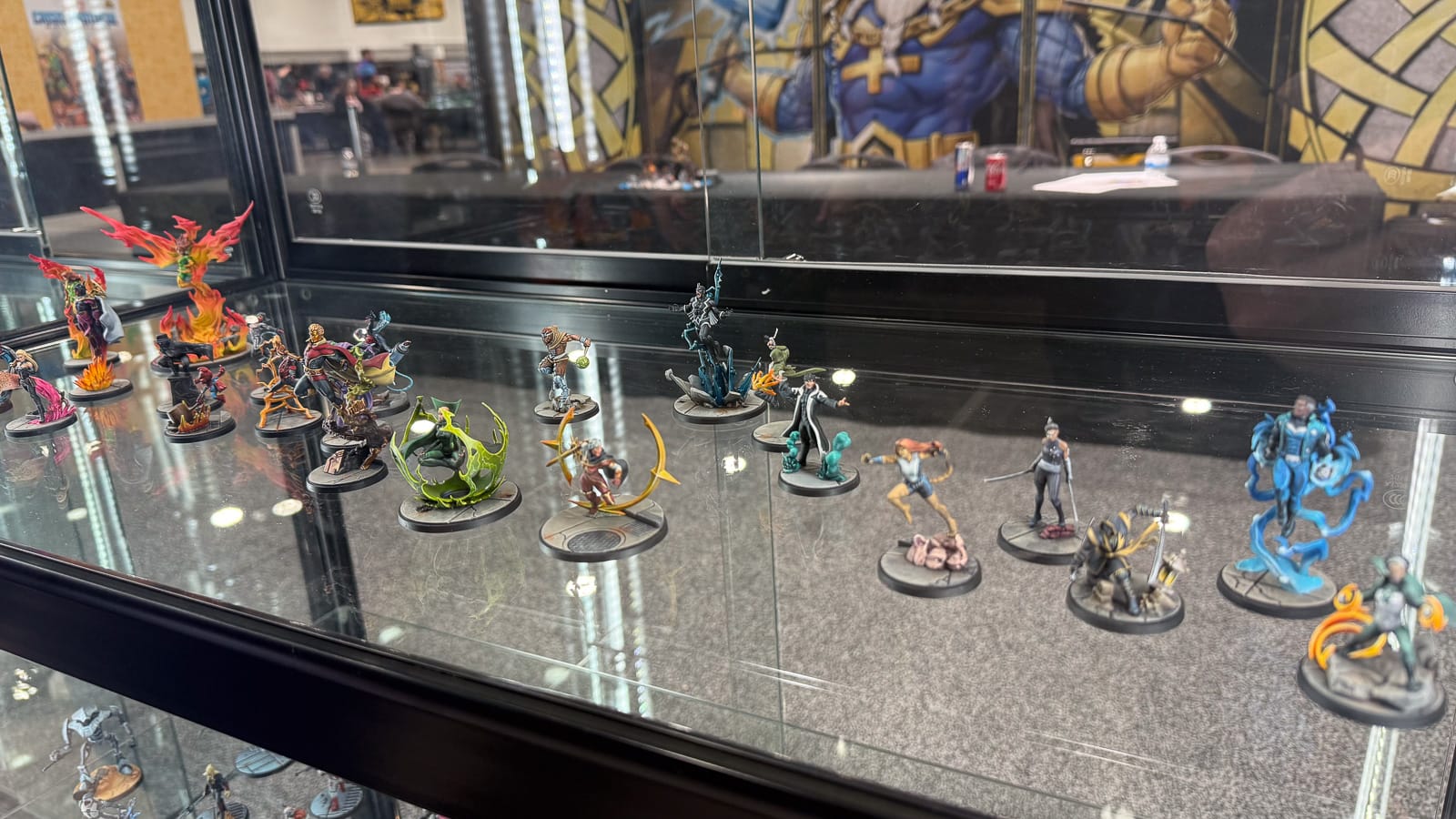
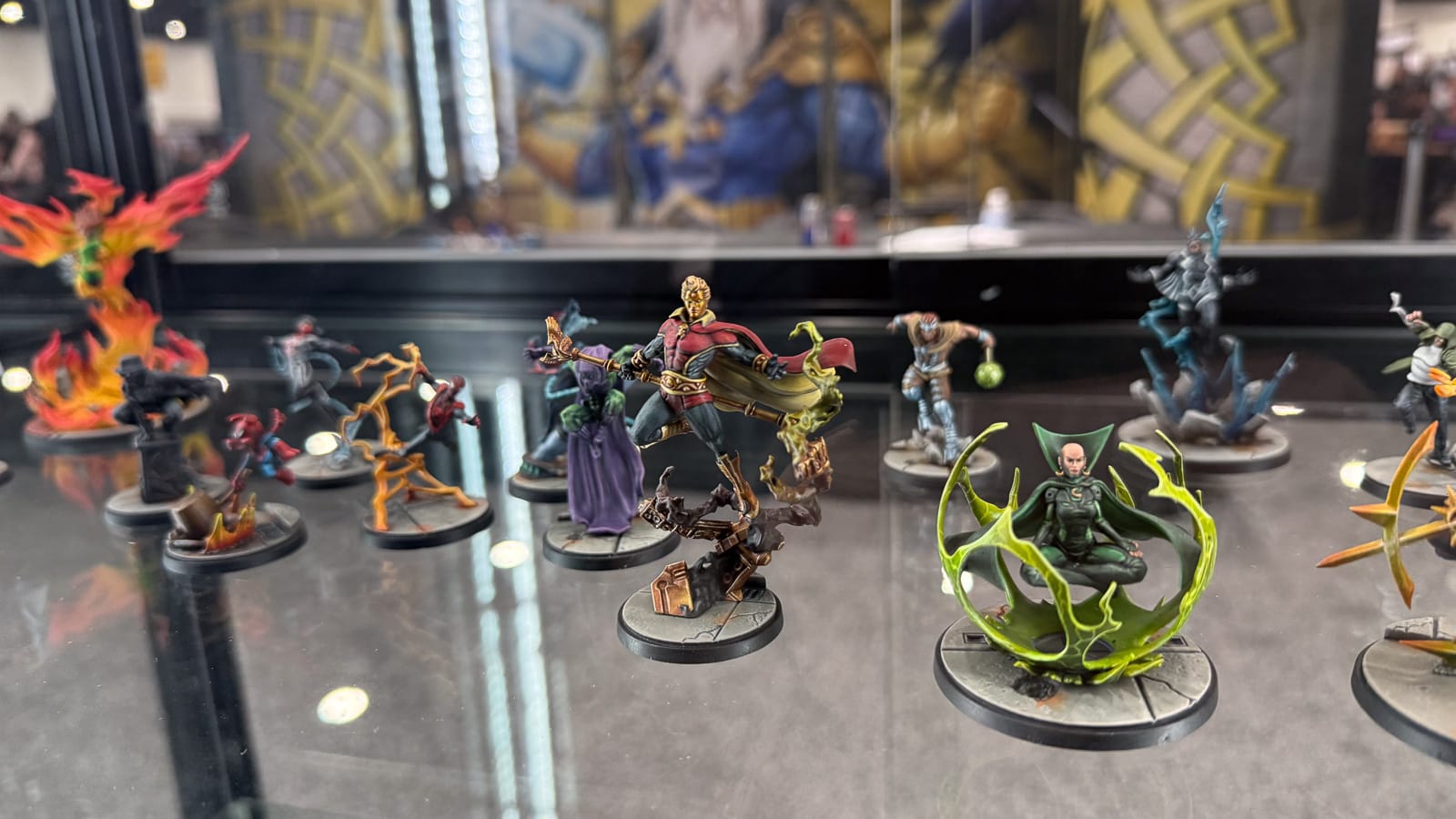

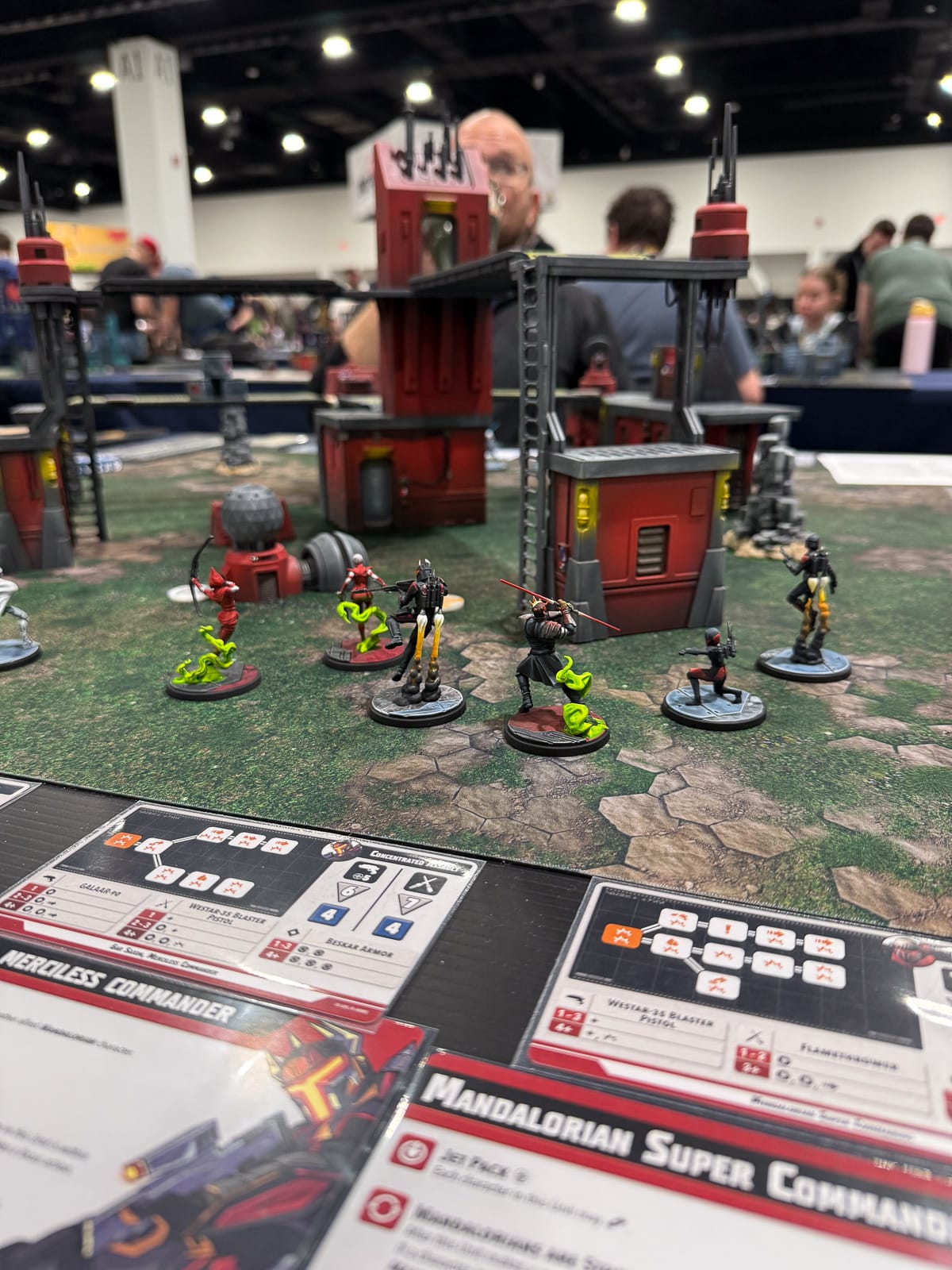
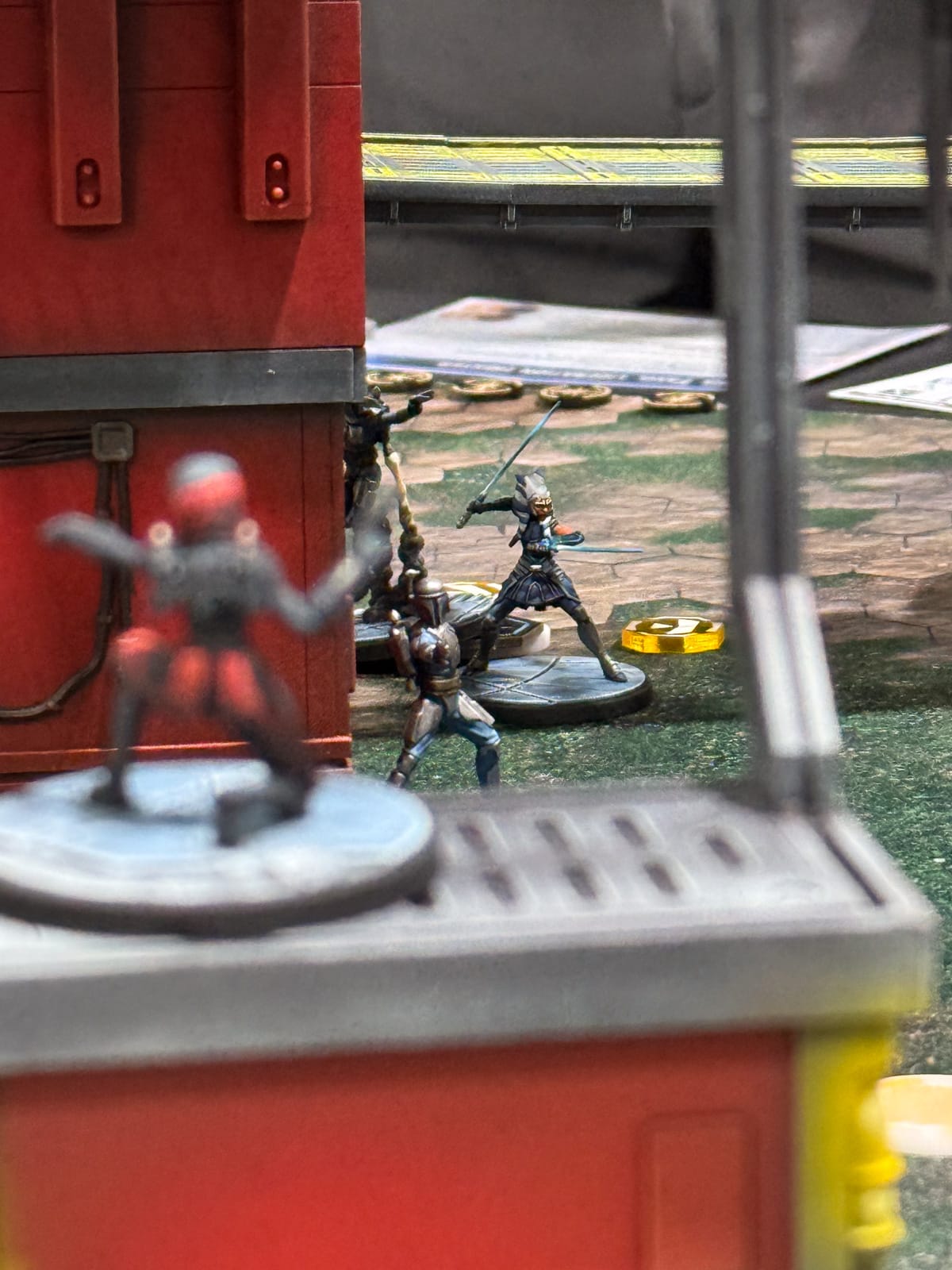
Painted versions of new Marvel Crisis Protocol Releases, and some gameplay for Star Wars: Shatterpoint
GT: Did you know at that time that the comics and Warhammer miniatures were going to be the start of your career?
WS: So the hilarious part about it all. Your family always teases you when you get really into something, right? Especially like your aunts and uncles and stuff. So, I would explain to them what the game world is. My family were all very supportive, of course, but they always pulled that classic line of “ well you love it so much…are you going to make a job out of it someday?” I would always look at them and be like “You're crazy. It's just a hobby. I want to go teach or I want to be an Air Force pilot, or whatever it was at the time.” I just assumed that this would just be something that I did in my off time.
Well, the joke was on me because it actually wound up being a career.
Just through happenstance, I wound up getting a chance to join the industry as a retail support specialist. My wife had just finished grad school, and we were kind of in a transitional period anyway so I was like “well, why not?” I applied, thinking there's no way that I'll get a call back… but I did. From there, I just worked my way through the industry. It's just that trajectory; my knack or my passion won out over my inexperience. Here I am, 30 years later, somehow in charge of two pretty big properties that are on the table.
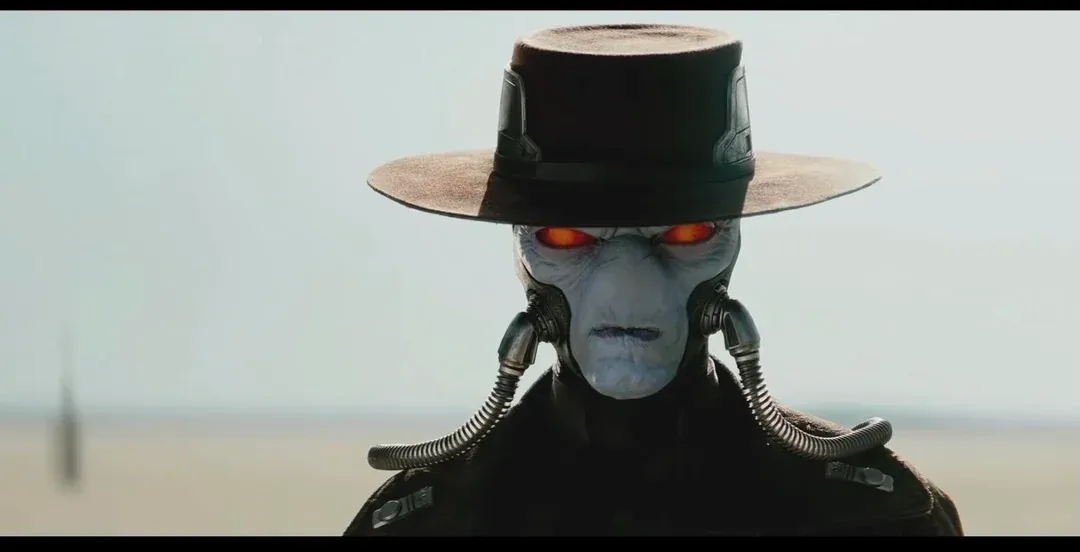
GT: Who's your favorite Star Wars character?
WS: Oh my gosh. Well, Cad Bane is my favorite Star Wars character in the modern era.
When he started appearing in the Clone Wars, there was just something about the clever guy who can overcome his power deficiencies through smart planning and grit. I love the fact that he can always get one up on the Jedi, even though he never quite wins, because it's an animated TV show and it's Galactic Republic propaganda, right? (laughs)
I was fascinated with that character. I'm from Montana, so I like the old Western gunslinger style. He already kind of had me at the look, but then the way the character was written, the way that he interacts and talks, that really got me.
If you ask me overall, in the long run, who my favorite character is, it's Luke Skywalker, of course. As a kid, that's who I wanted to be; I wanted to fly the cool X-wings, I wanted to be the Jedi Knight. I still have such a resonance with that character with who he is.
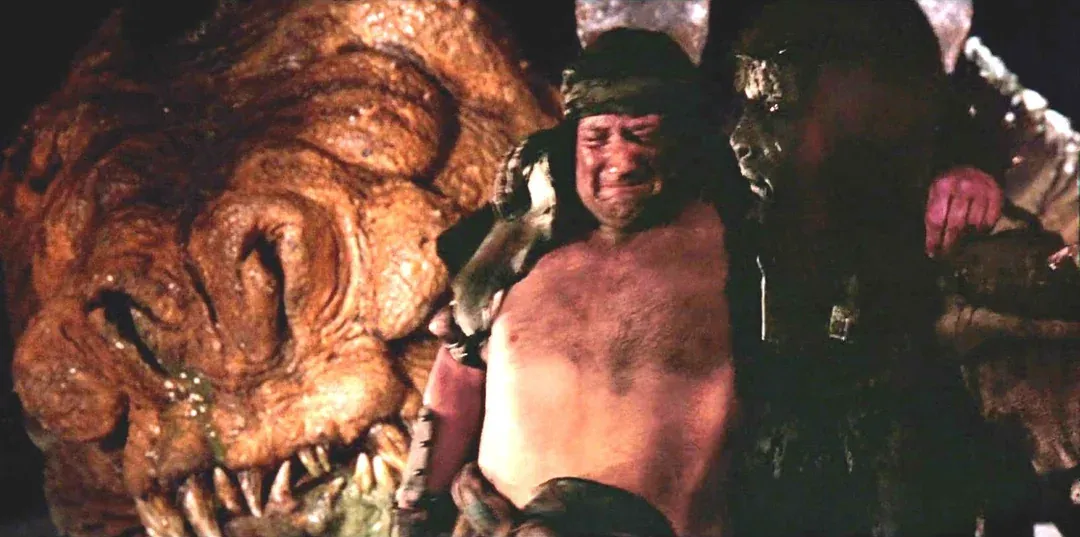
GT: Do you have a favorite obscure Star Wars character?
WS: (laughs) I think probably one of the ones that I'm most fascinated with is the Rancor Herder, Malakili. In this short amount of time, he cries over his pet Rancor that dies; he's got a true emotional attachment to this creature that's supposed to be monstrous. He's such a throwaway and yet he has this huge emotional arc. And that's one of the fun things about Star Wars; no matter who the character is, they have a backstory. Like even the Dianoga, which is force-sensitive, in the trash compactor has literally a short story about how it got there, how it feels about being there.
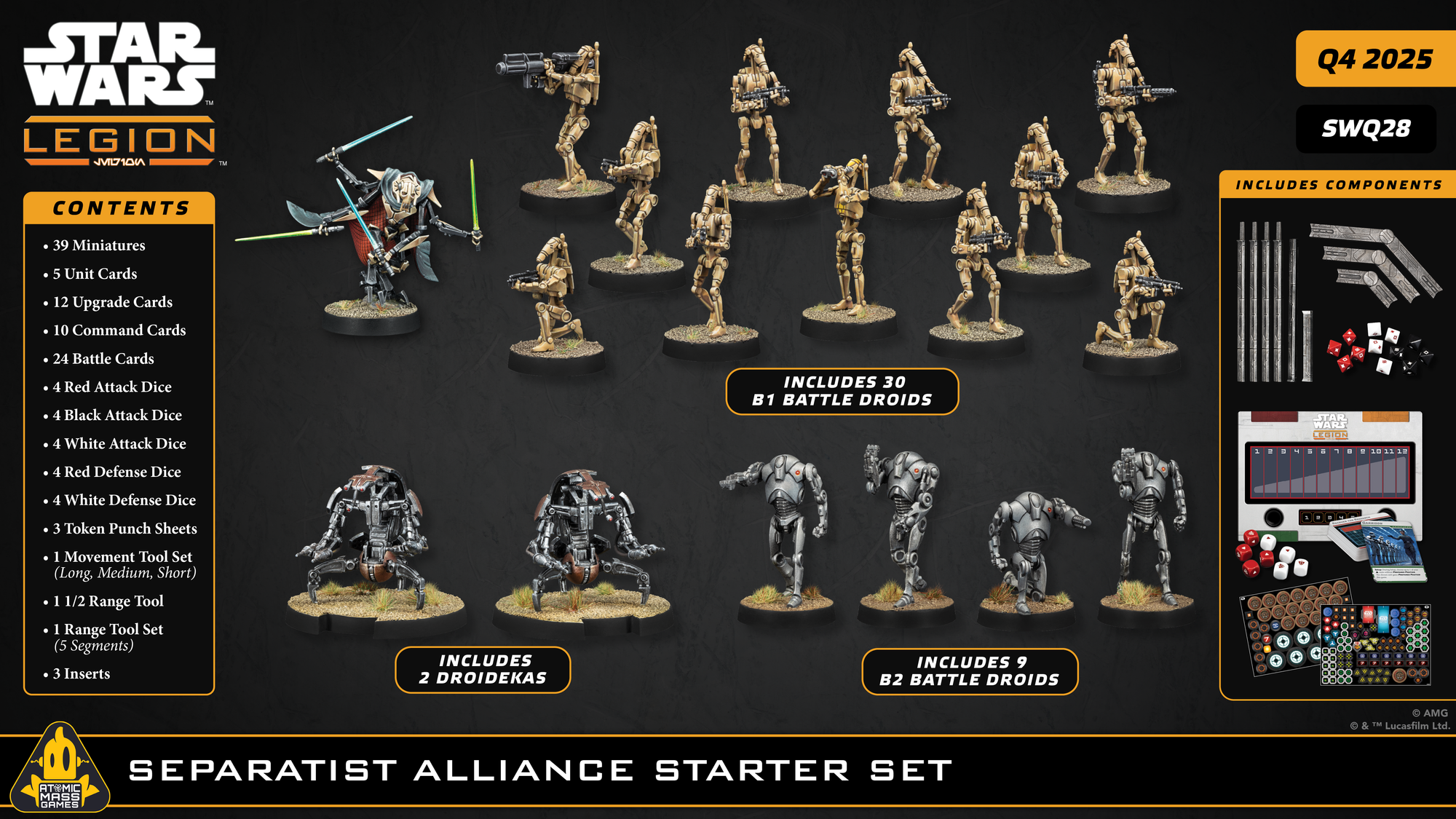
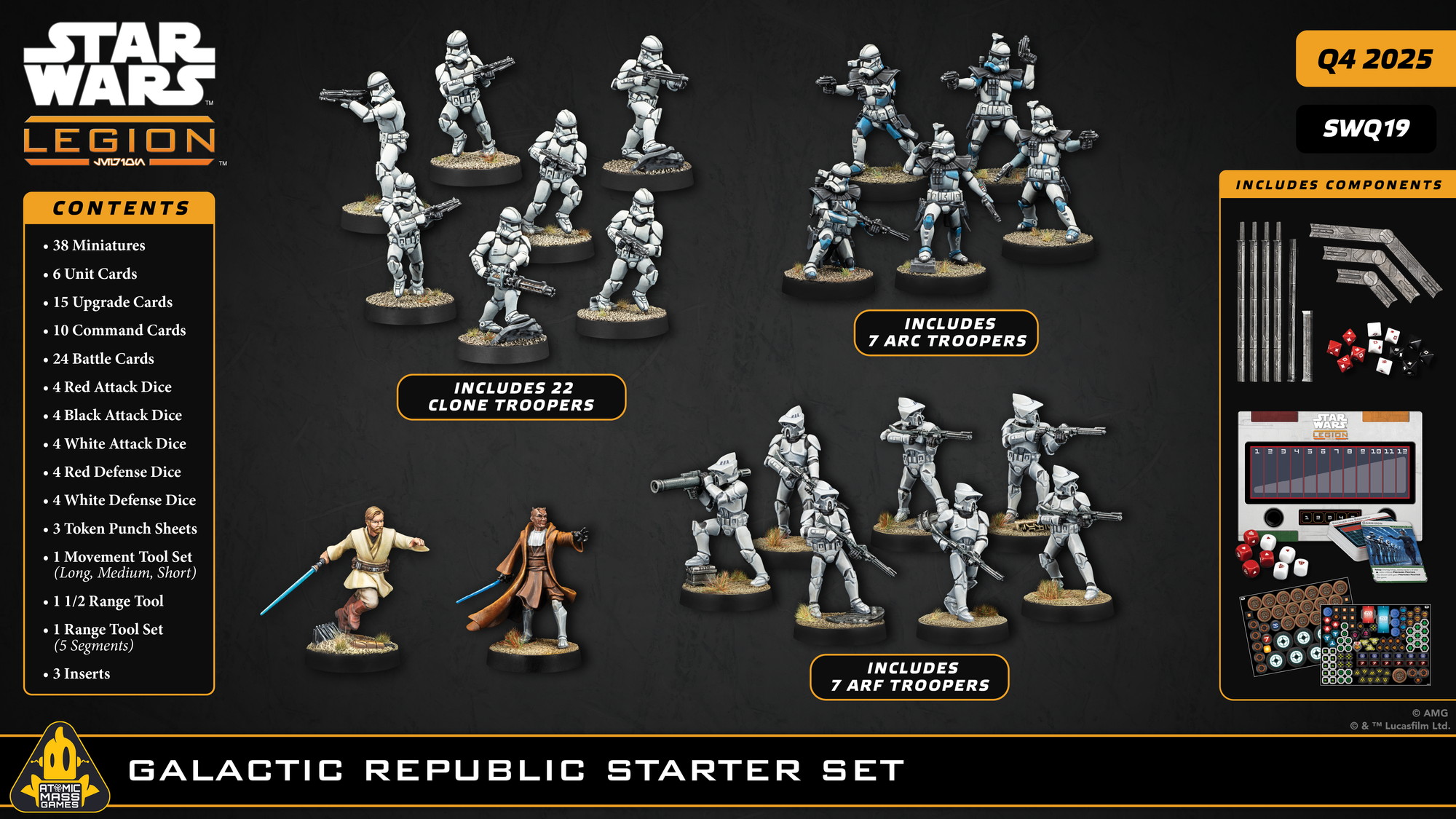
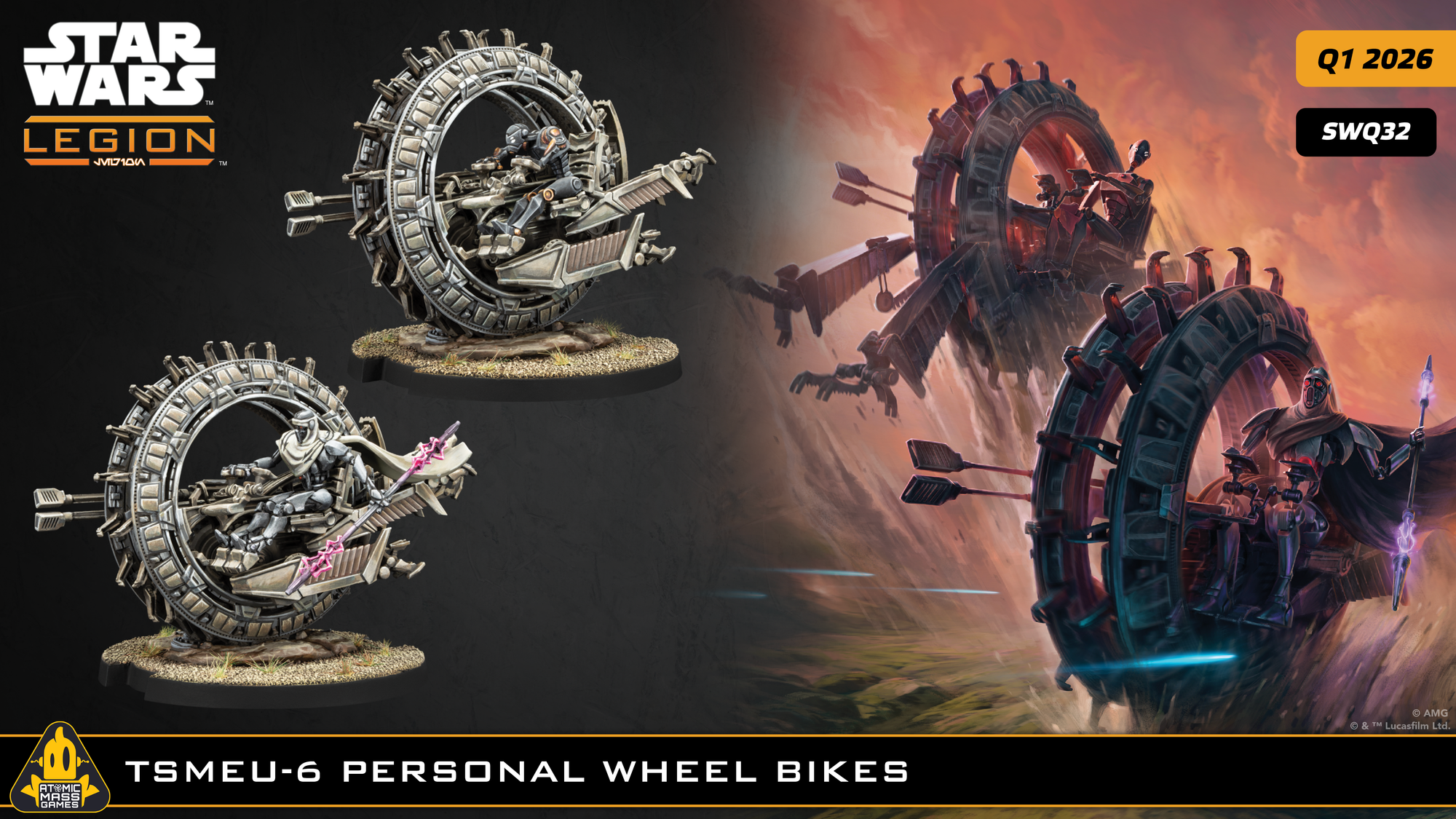
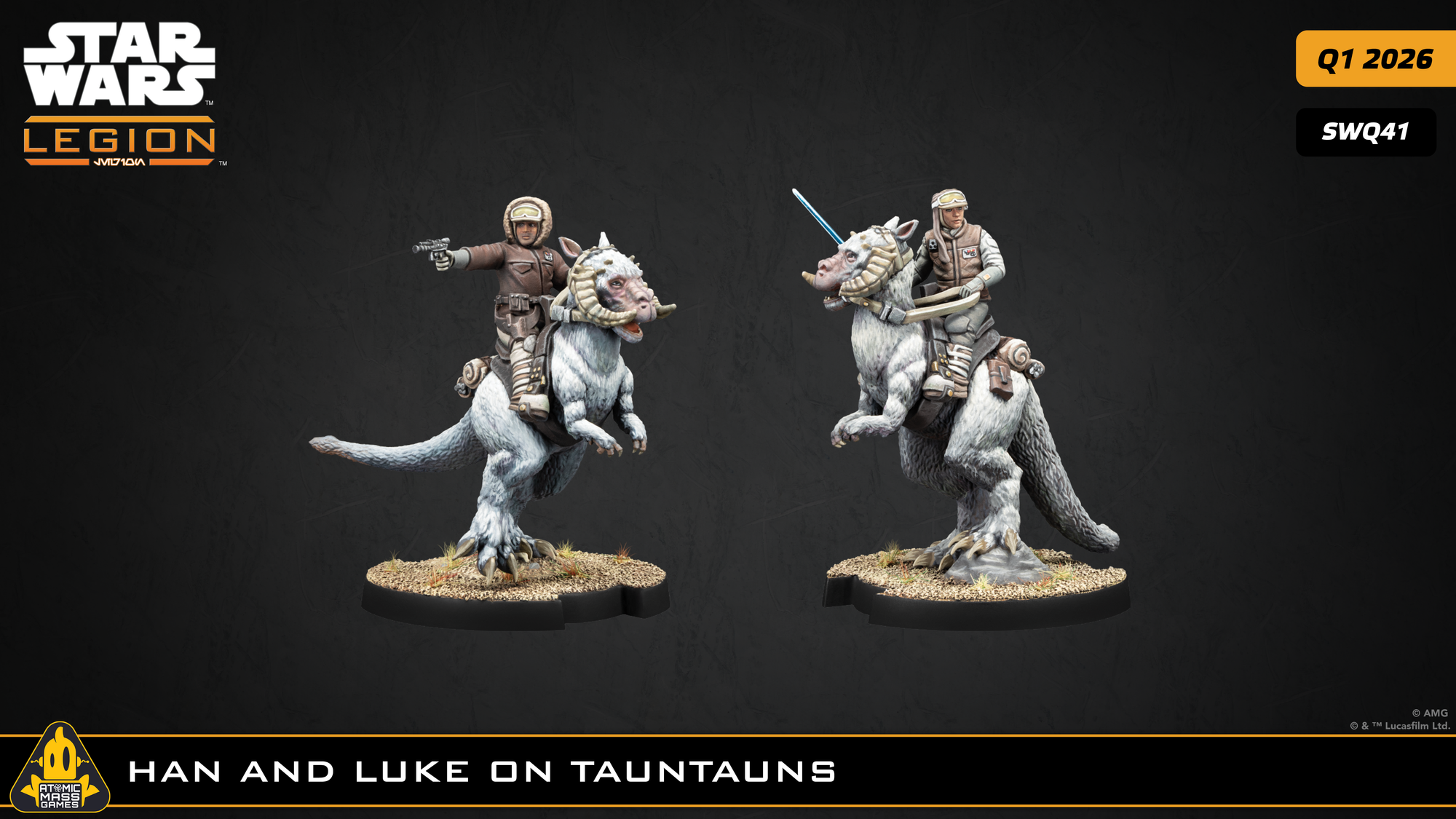
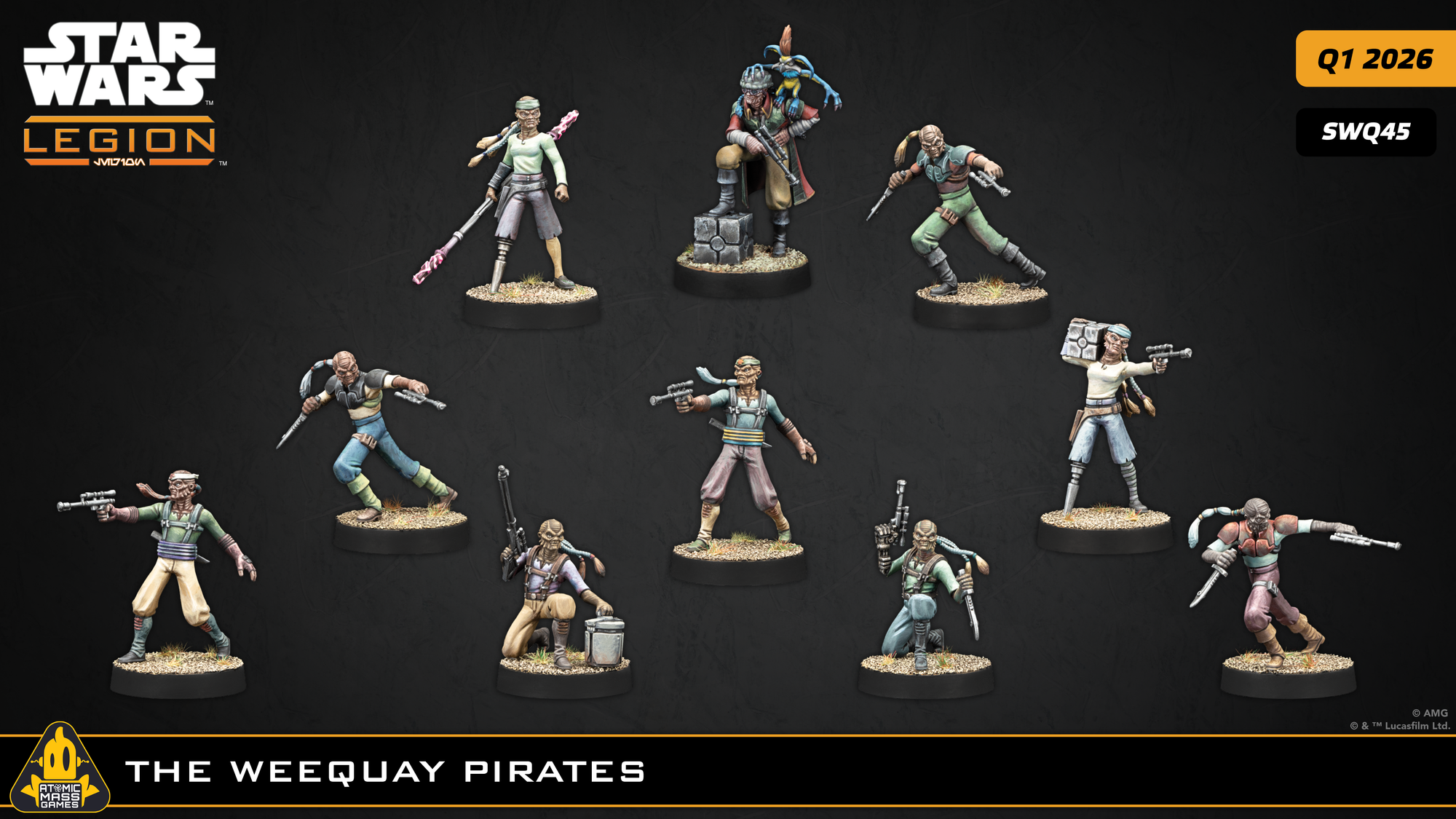

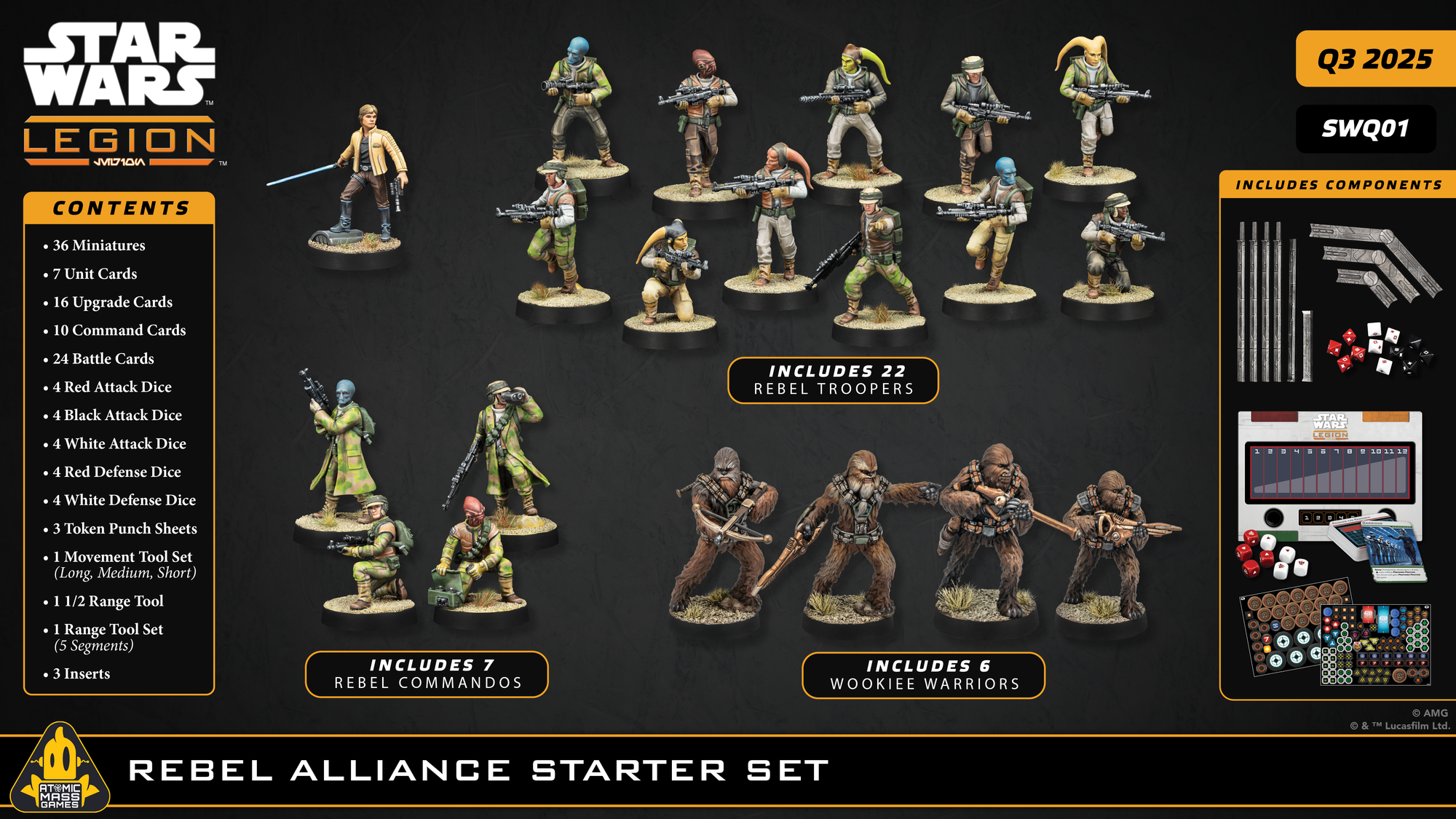
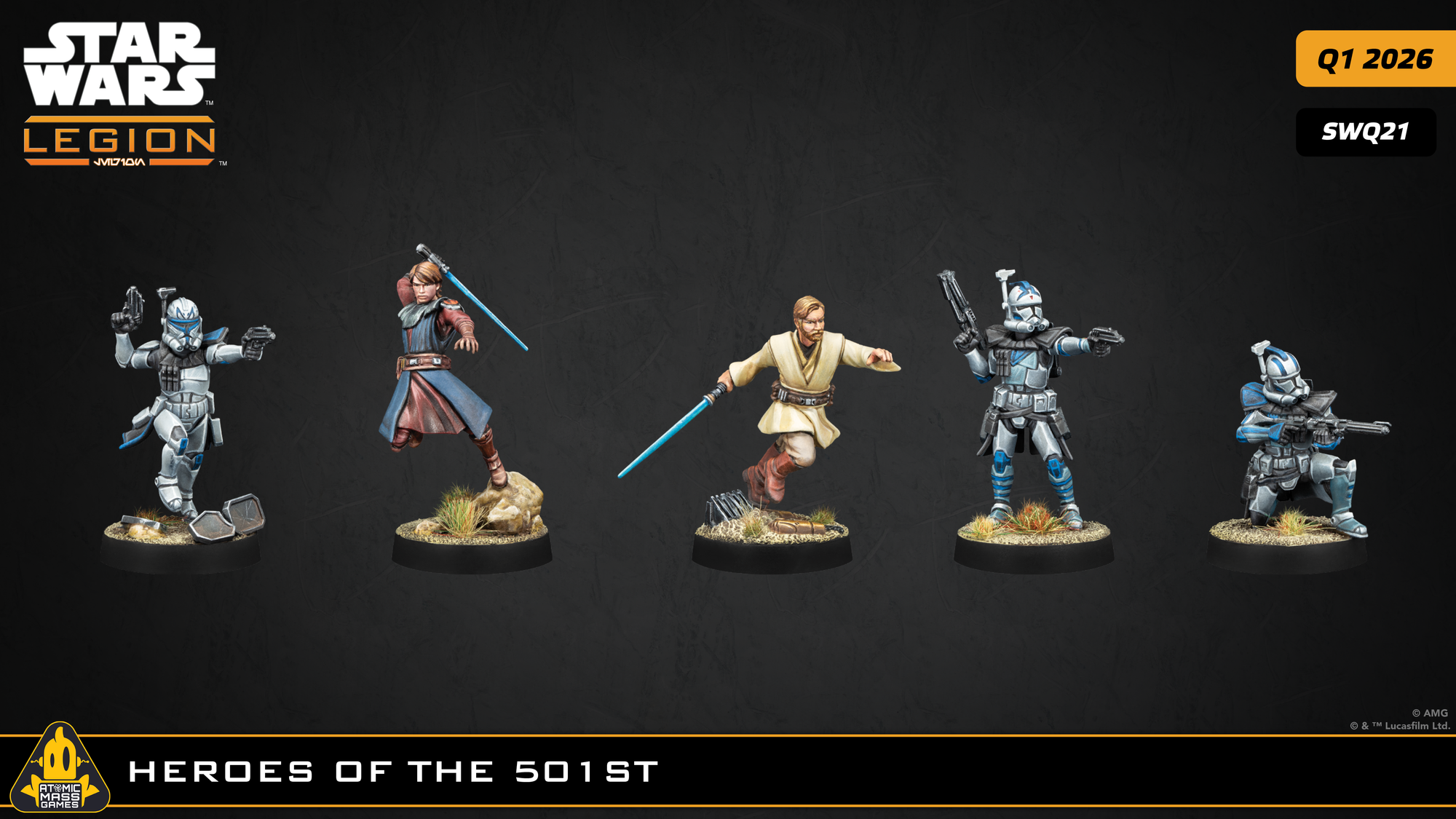
Even more Star Wars: Legion announcements, including more vehicles and some Tauntauns!
GT: Switching gears to some product-talk, with the General Grievous Wheel Bike reveal and soon-to-be release, is there a lot of consideration with the physical design of the model? Specifically for it to be displayed on the tables and in glass cases (or future competitions)? It is a model that just begs for some really amazing paint work and creative designs.
WS: So that’s what we try to do, right? We view every single miniature that we make as if we're taking a $500 Sideshow Collectible statue and make it way smaller for like $5 or $10. Dallas always jokes that “we make a $250 statue for $50.” He definitely keeps his team focused on making these pieces of miniature art. We think about this a lot; how would a miniature painter approach [painting] it? If I was going to paint this for competition, how would I do it? Does it have the elements that it needs? Does it have open space where I can express myself? Does it have the right details? Does it have the right composition? Does it tell a story just in the pose that I can see and then express it through my art? Dallas also takes it from the side of “ Is it accessible to a new painter? If you've never been in the hobby, is it overwhelming? Is there too much detail? Are we making sure that it works with modern painting methods like contrast paints, washes, edge highlight, and those kinds of things?”
For example, if you compare the original Star Wars Legion sculpts to some of the new Legion sculpts, the feedback from the players have been like “These look/feel like Shatterpoint sculpts to me.” There are a number of different reasons for this, but one of the big reasons is because we have changed the stylization of the cloth with the hard plastic manufacturing. The detail fidelity is higher which can allow for a lot more exaggeration to happen. With soft plastics, you lose some of that detail and so in the design space you have to over-emphasize [details] to make sure it comes through. You can't translate the exact sculpt of soft plastic to hard plastic and have it look right because each material has its own thing. Old Legion cloth was more natural; It had weight to it and the clothing looks and it feels heavy with softer folds.
The problem with that soft plastic cloth is that it’s soft gradations and details. Even though it mimics realism, it doesn't take contrast at all and you lose some of the details. So, what we did with Shatterpoint, and what we've applied to Legion, is a stylistic choice that allows for modern painting techniques. The cloth is sharper, more stylized, and more dynamic. They have really sharp edges to them and they’re more exaggerated. So, yes it's a stylization that pulls it away from realism a little bit, but what it does is it really opens it up for painters, new and old, to paint easier and allows them to see painting success. We've updated the tools and try to keep the sculpt's current with the kinds of innovations in painting that have made painting even more accessible at a higher level and give people that confidence.
Through these new tools and paints, we’ve just learned so much about our abilities to allow us to do things to change and grow dynamically. As you work more and more with your factories and your partners overseas, they start to really understand what you want and what we can do.
We're really lucky to work with some folks who are very big into hobby miniatures and modeling who tell us how exactly that engineering portion would work and what it would take on our end to make it happen. We reference Gundam kits all the time and see how they do things.
I don't think we need bendable joints, though, that's not in our contract (laughs).
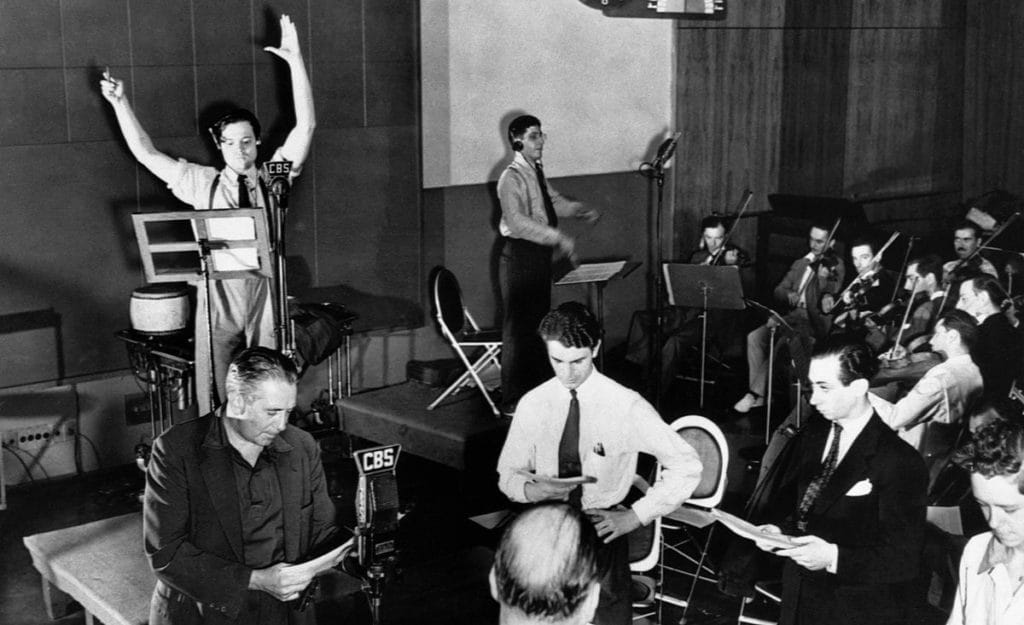

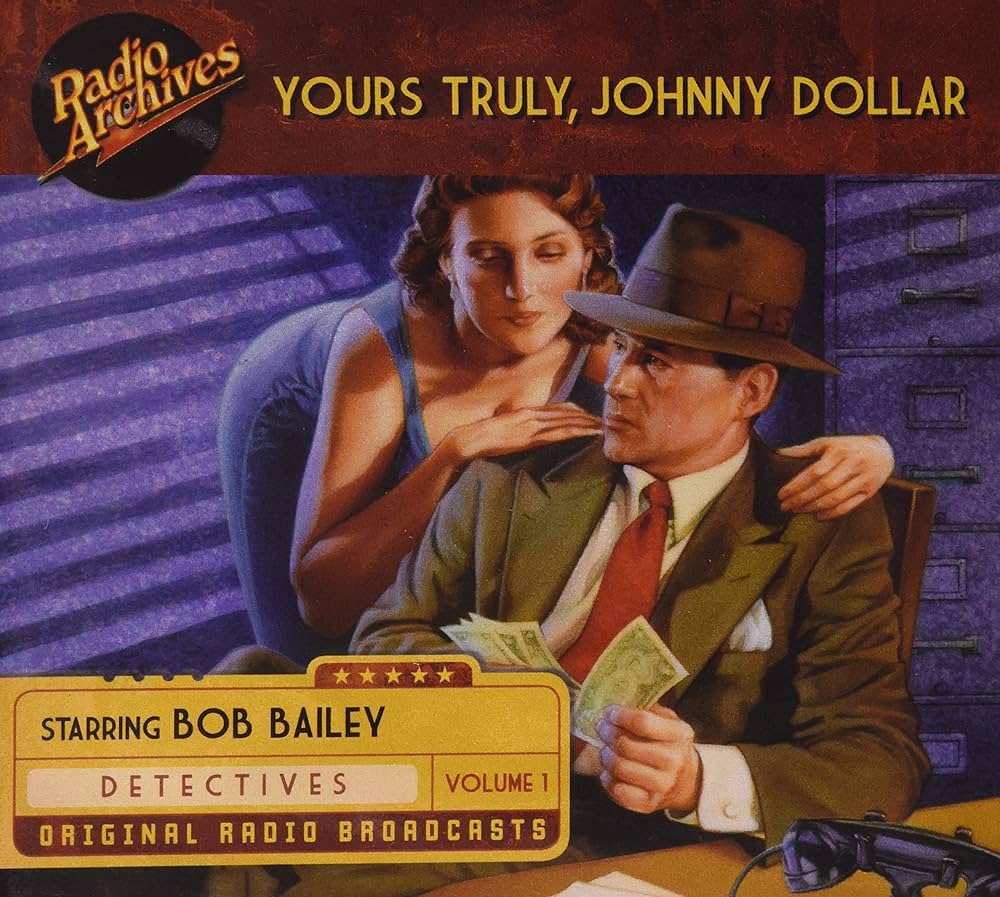
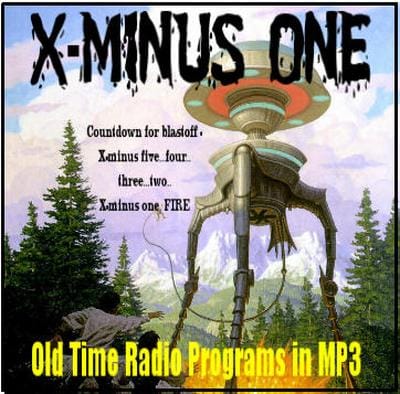
GT: Well, last question, super important. When you hobby,(paint, build, etc.) do you watch TV shows or listen to music?
WS: Oh, actually, neither. I listen to old-time radio, like Johnny Dollar, Dragnet, or Jack Benny.
My beat is Broadway, X Minus One, like the old sci-fi stuff. There are a ton of apps that just have all of these programs and they are free.
So, here’s a true look into my life. The real career that I always wanted was to be an artist, and I think the peak of theater and entertainment was those live radio dramas that were way back in the day. Everything is done right there; The music, the sound effects, the acting. That’s art. There's just something about it that just puts me in the mood with painting. it's really easy to listen to and paint to, because you've got the sound effects, you've got the voice actors, and you have the story. There's nothing to look at. A lot of times, when there's a movie and you’re working, you look up, even if you've seen it a thousand times and go “oh, this is my favorite part!” So you stop, watch, and then after it’s over you have to zone back in.
So I'll just turn on the old time radio all the time, and that’s what I listen to when I hobby.
GT: We know you have Path of the Worthy announcements coming up, so we don’t want to take up anymore of your time this morning. Thank you so much for meeting with us today.
WS: Of course! Thanks for chatting with me.
Will Shick is the VP of Creative Development and Strategy for Atomic Mass Games, responsible for games like Marvel Crisis Protocol, Star Wars: Shatterpoint, Star Wars: Legion, and can usually be found at a convention or playing games with his children!
As always, stick to Gaming Trend for all news around Marvel Crisis Protocol, Star Wars: Shatterpoint and Star Wars: Legion.
